Member Blog: Payment Processing in the Cannabis Space – Part 2

by Todd Glider, MobiusPay, Inc
This is Part II in a series of bog posts entitled Payment Processing in the Cannabis Space. Part I can be found by clicking here.
America is a federation. As such, individual states have innumerable sovereign rights that supersede federal law. This may seem obvious, but in most countries, that’s not how it works. Whether they are democracies or not, often all rights emanate from the central government. When the central government says marijuana is illegal in such a place, specific regions or territories aren’t permitted to go their own way.
However, as a federation, the 50 states in the U.S. get to make up their own rules on a lot of material issues.
That’s why cannabis products containing more than .3% THC by volume can be legal in your state, but illegal, federally. And it is also why cannabis products containing .3% THC by volume or less can be legal, federally, but illegal in your state.
All this ambiguity gives the banks and card associations the vapors. And it goes a long way toward explaining why, nearly four years after the landmark Farm Bill, so few banks are willing to provide CBD businesses with merchant accounts.
Parenthetically, it’s also why, if you walk into your local Chase branch to open a simple checking account for your CBD or cannabis business, they will give you a lollipop and show you the door.
A Colorado Resident Walks into a Colorado Dispensary with a Credit Card…
Here’s a fair question: “If cannabis is legal in my state, and I operate a cannabis business in my state, why can’t I accept a credit card from a customer who is not only a resident of my state, but also somebody who got a credit card from a bank in my state?”
On those terms, it defies logic how any intrastate cannabis purchase would be a federal issue. Unfortunately, the movement of money from a Visa or Mastercard, or any U.S. credit card, occurs on a card association’s network, or rail. These rails are nationally interconnected, not siloed to a specific state or territory. So, even if a cannabis consumer lives in the apartment above a dispensary, heading downstairs to make a purchase with a credit card is a national transaction, and not a local one. And on those terms, it violates federal law.
Regional rails do exist outside of the card association networks. They connect banks to one another, and these are the rails that are leveraged for the non-cash transactions taking place at dispensaries around the country. Whether or not these rails are truly siloed, and not part of a national network, is, to say the least, the source of much legal, financial, and philosophical debate.
But Do I Even Need a Merchant Account?
It would be disingenuous to say that you need a merchant account to accept credit card payments. You don’t. There are several FinTech companies out there with names we all know and, generally speaking, trust to process payments on our behalf.
In the payments space, we refer to these third-party organizations as PSPs, or Payment Service Providers, or Payment Aggregators. With a PSP, a commercial enterprise doesn’t need its own merchant account. The PSP is allowing you, and thousands of other merchants, to share in the processing power of its merchant accounts and accept credit card payments on your behalf. In this case, you are what is called a ‘sub-merchant.’
However, the big PSPs, by and large, have been reticent about hopping aboard the CBD express. And there is little surprise there. These FinTech giants we associate with banking are, at their core, just software companies. To offer credit card processing, they need merchant accounts from Acquiring Banks, just like the rest of us. So the dearth of Acquiring Banks willing to work in the cannabis space affects them the same way it affects everyone else.
To date, only Square has thrown its hat in the ring, and an overwhelming number of CBD and hemp retailers have opted to go the Square route. Square is the most popular processing solution for CBD merchants for a couple of reasons. First, it’s easy to find. Searching “How do I begin accepting credit cards CBD” on Google nets mostly ads and review sites, but Square appears prominently. Parenthetically, I just entered that very search term, and Square appeared twice on page one.
Square, we always tell CBD merchants, is low-hanging fruit. Low-hanging fruit, by definition, should always be, and usually is, eaten first.
The near-universal recognition of Square also makes integration easier. The technologists that entrepreneurs hire to code their digital storefronts and websites have plenty of experience integrating the Square plugin for all manner of eCommerce businesses.
However, for the CBD retailer, there are important reasons to approach Square with caution, or, at a minimum, not to use Square without a backup processing option. Backup processing, or redundancy, is a must for everybody in a high-risk business, especially for CBD merchants using Square. It’s a bell we, at MobiusPay, sound often, as Square’s Set It and Forget It value proposition has proven a fiction for numerous CBD retailers.
The horror stories, reductively:
“Square shut me down.”
“Square is holding my money.”
“Square shut me down and is holding my money.”
When Square’s underwriters identify a compliance issue in a CBD retailer’s digital storefront, their processing is halted, and their funds are frozen — sometimes, indefinitely. Most problematic is that, owing to their size and dogged commitment to automation, Square does not excel at communicating with clients — even when it’s of vital importance.
Often, Square doesn’t disclose the cause of the account shutdown. This omission of details turns a precarious situation for the merchant into an existential crisis, and the larger the digital storefront, the bigger the problem it is. This is because, frequently, the compliance issue is a small one, like a broken link or an expired Certificate of Analysis. Depending upon the number of products in your shop, identifying the one problematic COA may be like finding a needle in a haystack. That’s doubly damning. Not only has processing stopped, but work has stopped, too — because now, it’s all-hands-on-deck. Everyone in the office is on a frantic scavenger hunt, trying to track down the one compliance issue (and for all you know, maybe there are two) that has caused all sales to halt.
That doesn’t happen when you have a merchant account.
Even without the threat of a halt in processing, though, merchant accounts will always be the smarter choice for CBD retailers. They simply offer greater flexibility, better rates, more stability, better throughput, and, perhaps most important of all, the marketing and strategy flexibility that a business needs to grow successfully.
This is not an indictment of Square. They deserve points for throwing their hat in the ring. They are good at what they do, and what they do good is provide a turnkey processing solution for low-risk brick & mortar and eCommerce merchants. The pet store, down the street from me, here in Philly, uses Square. When I’m picking up cat litter at the shop, I never think to suggest that she consider a merchant account. She doesn’t need it. Square was made for businesses like hers. It is ideal for low volume businesses operating in a routine business environment.
However, if you’re reading this, your business is facing challenges somewhat different from those faced by the pet store down the street — unless you specialize in CBD for pets, of course.
CBD businesses, as with all individuals and organizations in the cannabis space, stand at the vanguard. They are the tip of the spear in an inevitable plant medicine revolution.
Like square pegs — pun intended — in round holes, they don’t fit easily into Square’s steady-as-she-goes ecosystem.
On the other hand, establishing a merchant account is no picnic. Merchant accounts do not open like elevator doors. At their most reductive, merchant accounts are lines of credit, and lines of credit are established with a paper trail. There is an application to fill out. There are KYC protocols to follow. There are document requests and compliance checks. There is waiting for activation.
However, as someone who has spent many more years acquiring merchant accounts as a high-risk merchant than offering them to high-risk merchants, I can promise you that they are worth the wait and the effort, and that depending upon a PSP like Square for something as important as processing makes growth and success more difficult than it needs to be.
 MobiusPay, Inc. is a U.S.-based global financial services organization that is committed to empowering individuals and businesses. For more than a dozen years, MobiusPay has leveraged state-of-the-art secure billing technology, long-standing relationships with financial institutions and award-winning customer support to provide merchant processing and payment solutions to brick and mortar and digital businesses around the world.
MobiusPay, Inc. is a U.S.-based global financial services organization that is committed to empowering individuals and businesses. For more than a dozen years, MobiusPay has leveraged state-of-the-art secure billing technology, long-standing relationships with financial institutions and award-winning customer support to provide merchant processing and payment solutions to brick and mortar and digital businesses around the world.
Todd Glider has been an e-Commerce leader since the start of the Internet age. He has an MFA in Creative Writing from the University of Miami, and has served as CEO for small and medium-sized technology companies in Spain, Austria and the United States. As our Chief Business Development Officer, Todd introduces MobiusPay’s suite of award-winning financial services to new industries, and implements the development strategies and key partnerships needed to bring value to new customers.
Member Blog: How to Prevent Pathogen Infections in Cannabis Gardens
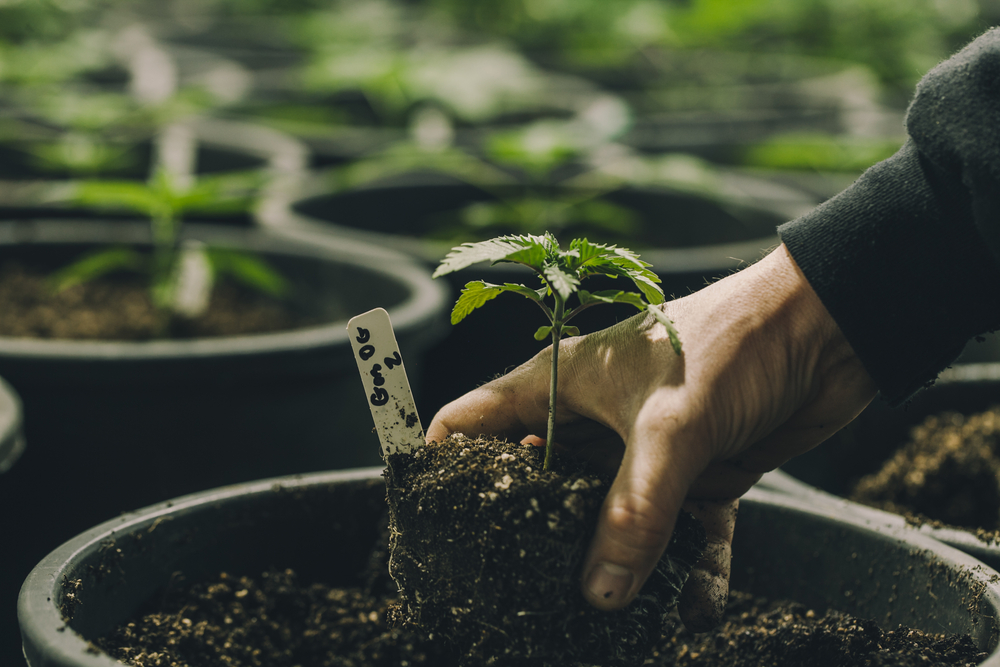
by María Zuccarelli, MyFloraDNA
One pathogen can spread through a garden and ruin everything that was going well.
A pathogen is “an organism causing the disease to its host, with the severity of the disease symptoms referred to as virulence.” (NCBI) There are different kinds of pathogens. These are the main three infecting cannabis crops:
- Viruses (ex. Cannabis Cryptic Virus)
- Viroids (ex. Hop Latent Viroid)
- Fungus (ex. Botrytis)
Well, here are five recommendations approved by Dr. Angel Fernandez – Ph.D. in plant science with a complete background in cannabis genetics and genomics, CEO and Co-Founder of MyFloraDNA – The following recommendations will impede the spread of a pathogen in your cannabis garden so the next time you’re prepared for a worst-case scenario.
1. The first step: remove.
If a plant’s result comes out positive, it must be removed from the field or greenhouse as soon as possible, without exposing it directly to other plants.
2. Destroy.
Ironically, the best solution to avoid the destruction of your garden is to dispose of infected plants. If the infection is in a mother plant, remember to remove its clones from your growing facility and test them as fast as possible with your trusted genomic laboratory.
3. Don’t deny it, take action and prevent the spread.
If one plant is positive, assume the viroid is present in your field and extreme your prevention strategies.
- Sterilize all tools used
- Control your personnel and visitors
- Do not jump from one plant to another without sterilizing your equipment
4. Don’t look away and take responsibility for your problem. Test regularly.
It doesn’t matter if other plants don’t return positives. Some pathogens remain dormant for weeks (like Botrytis or “bud rot”). Stay alert and test regularly.
5. Keep an eye on pests, they are pathogens’ best friends.
Control pests. One of the causes of quick pathogen propagation in Cannabis fields is pest infections, like Whiteflies.
How do you know if a plant is infected?
It might sound obvious, but pay attention to the symptoms. Anyways, the most effective way is by requesting RNA testing from your trusted genomic laboratory.
RNA testing for pathogen detection is the easiest way to detect infected plants. The results are obtained through the qPCR method, determining whether your samples are positive or negative for the pathogen you wish to detect.
The top 7 cannabis pathogens are:
Commonly known as Dudding Disease. HLV is a single-stranded, circular infectious RNA viroid (it is not a virus).
Symptoms during vegetative stage: stunted growth, outward growth, abnormal branching, small leaves, overlapping blades, brittle stems, chlorosis on the leaves (yellow leaves),
Symptoms during flowering stage: trichome reduction, dull smell, no terpenes or reduction of terpenes, reduction of cannabinoid production, smaller buds.
This RNA virus can infect plants.
Symptoms: yellowing leaves showing necrosis, chlorotic leaves, lower yield, and leaf thickness.
Beet curly top virus (BCTV) is a plant virus-containing single-stranded DNA.
Symptoms: Leaf curling, yellowing of leaves with purple veins, death of young seedlings, bud deformation, reduced bud quality, and yield.
Cannabis Cryptic Virus (CCV) is a double-stranded RNA virus that is known to infect plants without causing obvious symptoms.
Symptoms: Rolling and/or yellow leaves, smaller buds, fewer trichomes, cannabinoids, and terpenes.
The main problem with this virus is that once plants are infected, there is no cure for mosaic viruses. For this reason, PREVENTION is KEY!
Symptoms: Severe stunting of plants, yellow mosaic or calico patterns occur on the foliage, and plants grow slowly and generally produce poor yields.
This mold is one of the most damaging fungi that can kill cannabis plants within a week. It can remain dormant for long periods of time before damaging your plant.
Symptoms: Brown, water-soaked spots on buds, chlorotic areas on stems, gray-brown mass of spores on buds, interveinal yellowing leaves showing necrosis, and smaller buds.
Fusarium is a devastating fungus pretty frequent on cannabis crops.
Symptoms: wilts and bud, crown, and root rots, chlorotic leaves, stunted growth, plant death.
I am glad you kept reading until here and hope this guide helps you to keep growing healthy and safe cannabis plants!
Also, here are some interesting topics you may like when you click on them before you close this tab:
 About MyFloraDNA: We are a genomic laboratory based in Woodland California, delivering modern genomics for the Cannabis Industry. \
About MyFloraDNA: We are a genomic laboratory based in Woodland California, delivering modern genomics for the Cannabis Industry. \
Our services include Trait detection (cannabinoid profile and sex/gender ID), Pathogen Detection, and Genetic Validation Services. We offer breakthrough solutions using the inner power of your plants.
Author: María Zuccarelli – Marketing Manager at MyFloraDNA.
Marketing expert, with a portfolio of innovative and successful projects around the world. Native leader, resolutive and efficient. She brings creativity and proactivity to MyFloraDNA’s Marketing Department.
Editor: Felipe Cisternas
Member Blog: Payment Processing In The Cannabis Space

by Todd Glider, MobiusPay, Inc
There is a lot of confusion about payment processing in the cannabis space because payment processing is somewhat confusing to begin with, and because, in the cannabis space, ambiguity is a way of life.
The title of this very blog post could, realistically, seem misleading to some.
So, to be clear, when I say, “Cannabis Space,” I mean the entire industry — from plant-touchers (CBD included) to the ancillary businesses built up around it.
The passage of the 2018 Farm Bill marked an exciting new chapter for the industry. Suddenly, CBD, or, more specifically, any ingestible cannabis product containing .3% THC or less by volume, was classified as hemp. And since it is marijuana, and not hemp, that is defined as a Schedule I substance under the United States Controlled Substance Act, the Farm Bill, technically, made products like CBD as legal as cow milk — federally, anyway.
The upshot of this new classification is that now, at least some players in the cannabis space can market their products to a national base of consumers and clients, and they can do so by accepting credit cards as payment.
However, the myriad Acquiring Banks across the United States have not exactly jumped for joy at the prospect of providing credit card processing in the form of merchant accounts to CBD retailers. Reticence rules. CBD is considered high risk, and four years on, only a handful of them have thrown their hat in the ring.
Jargon Alert I: Acquiring Banks and Issuing Banks
In merchant processing parlance, banks fall into two categories: Acquiring Banks and Issuing Banks. Acquiring Banks, or, Acquirers, provide merchant processing accounts to businesses wishing to accept credit card transactions. Issuing Banks, short for Card Issuing Banks, are banks that offer branded payment cards directly to consumers. For example, if your bank has ever offered you a Visa card, it is an Issuing Bank (not that it couldn’t also be an Acquiring Bank, too).
Jargon Alert II: CBD is ‘High Risk’
CBD is deemed high risk by the card associations (i.e., Visa, MasterCard, American Express), and when the card associations deem a product or industry high risk, most Acquiring Banks tap out. This is because financial institutions are, by nature, risk averse (subprime mortgage crisis notwithstanding).
So let’s talk for a minute about risk. High risk, that compound term, is a truncation of a longer phrase: ‘Higher risk of fraud or chargebacks.’
Why are CBD products at higher risk of fraud? It’s impossible to say for sure since the Visas and MasterCards of the world are publicly traded companies with their own trade secrets and IP, but there are several characteristics unique to CBD, or any cannabis product now federally legal, that likely figured into that decision.
Those FDA disclaimers that CBD retailers must print or paste on all product packaging and webpages are as good a place as any to start. They are mandatory because none of the benefits assigned to CBD have been clinically proven. There just isn’t enough data or testing at this point, and no big story there. That’s what happens when you demonize a plant for 100 years.
Consequently, from the perspective of the FDA, and the card associations, by extension, consumers are making CBD purchases with baked-in expectations based, exclusively, on word-of-mouth advice and anecdotal data. That’s a recipe for dissatisfied customers. And dissatisfied customers tend to charge back transactions.
The card associations, and the banks who provide merchant accounts, worry incessantly about fraud and chargebacks.
Too Close for Comfort
Dissatisfied customers aside, there are onerous legal nuances that make the prospect of boarding cannabis merchants, even those selling products that are federally legal, daunting for banks.
Selling a product with .31% THC across state lines is felonious. It is a federal offense. Violating a law like that could get a bank’s charter revoked, or, at a minimum, result in massive fines.
On the other hand, selling a product with .30% THC across state lines is 100% federally legal. As stated above, safe as milk, federally.
That is a heck of a distinction. If any product contains more than .3% THC by volume, it is ‘marijuana’ in the eyes of the federal government. From the perspective of the banks, that’s a little close for comfort. Furthermore, banks don’t operate laboratories. They must rely on testing data presented to them in the form of third-party lab reports — Certificates of Analysis or COAs for short — to verify that the products being sold are federally legal.
The last thing an Acquiring Bank wants to do is violate a federal law EVER. It could result in a loss of their charter, lawsuits, and massive fines. And it’s important to keep in mind that the Acquiring Banks out there offering merchant accounts to CBD retailers are not giant, publicly traded institutions like Bank of America or Wells Fargo. They tend to be much smaller, and therefore, have infinitely smaller war chests for court cases.
Still, separating the federally legal Tier I cannabis product from the federally illegal Tier I cannabis product should be pretty cut-and-dry. If the product you’re selling is .3% THC by volume or less, it is exempt from the Controlled Substance Act (CSA). If that threshold is documented in the product’s Certificates of Analysis (COA), you ought to be able to sell it.
Unfortunately, it’s not that simple. When bank underwriters look at percentages of Delta 8, Delta 9, and Delta 10 on the COAs that cross their desks, they’re frequently at sixes and sevens trying to figure the whole thing out.
From the perspective of the 2018 Farm Bill, a cannabis product is hemp if it contains .3% Delta-9 THC or less by volume, but what everybody says is “.3% THC or less by volume.” Consequently, when the compliance officer at the bank is performing her due diligence by inspecting the COAs corresponding to each product, she may encounter a lot of crooked numbers, and she may blanch at the results.
Those results, often, look something like the following:
00.195% D9-THC
52.475% d8-THC.
Federally, the Delta-9 threshold is the only threshold that matters. The 2018 Farm Bill says as much, and the 9th Circuit Court of Appeals in California affirmed it in a ruling this past May. Therefore, in the example above, the Delta-9 threshold has not been crossed. It’s not even close. It is textbook HEMP, even if the Delta-8 threshold is off the charts.
However, if the compliance officer was provided the remit, “.3% or lower,” he’s likely to look at this and say, “Fail,” without realizing that the Delta-8 THC information is irrelevant as far as federal law goes.
Complicating the underwriting further is the fact that there is, to date, no standard template for COA reports. Every lab presents them differently. Bank compliance officers rarely moonlight as scientists. Like most of us, these CBD COAs are probably the first lab reports they’ve looked at since high school chemistry.
Furthermore, the banks can set their own rules. They don’t have to board CBD merchants. Few do, and those few that do have their own standards and practices.
 Todd Glider has been an e-Commerce leader since the start of the Internet age. He has an MFA in Creative Writing from the University of Miami, and has served as CEO for small and medium-sized technology companies in Spain, Austria and the United States. As our Chief Business Development Officer, Todd introduces MobiusPay’s suite of award-winning financial services to new industries, and implements the development strategies and key partnerships needed to bring value to new customers.
Todd Glider has been an e-Commerce leader since the start of the Internet age. He has an MFA in Creative Writing from the University of Miami, and has served as CEO for small and medium-sized technology companies in Spain, Austria and the United States. As our Chief Business Development Officer, Todd introduces MobiusPay’s suite of award-winning financial services to new industries, and implements the development strategies and key partnerships needed to bring value to new customers.
MobiusPay, Inc. is a U.S.-based global financial services organization that is committed to empowering individuals and businesses. For more than a dozen years, MobiusPay has leveraged state-of-the-art secure billing technology, long-standing relationships with financial institutions and award-winning customer support to provide merchant processing and payment solutions to brick and mortar and digital businesses around the world.
Member Blog: Understanding D&O Coverage for the Cannabis Industry

by Jon Spratt, Greensite Insurance Services
Cannabis industry companies face more and sometimes greater threats than non-cannabis companies because of the emerging nature of the market, a complex regulatory landscape, and investor relations.
Because of the challenging landscape, cannabis organizations have some unique risks they may face while running their businesses including:
- High investor expectations and limited access to capital
- The federal status of cannabis
- Varying trade practices from state to state
- Lack of bankruptcy protections
- Increased merger & acquisition activity
- State-by-state licensing requirements
- Cannabis-specific local, state, and federal tax laws
Private companies in the cannabis market face threats from many directions, business leaders need to protect their assets and be able to attract top potential directors and officers to their company. The increased exposure to litigation includes disputes such as shareholder disagreement, allegations of mismanagement, and actions by regulatory agencies. Lawsuits can be levied against a cannabis company’s directors and officers and create risk for these individuals and the cannabis company. One way to help mitigate the risk of future losses is by getting Directors & Officers (D&O) insurance.
Directors & Officers Liability Insurance, or D&O, is a coverage designed to protect an organization and its directors and officers from being held financially responsible for legal action taken by an organization’s employees, vendors, customers, or shareholders. D&O insurance primarily covers the costs associated with an allegation and wrongful lawsuits including defense costs, legal fees, and settlements. D&O insurance does not cover illegal acts.
What is generally covered with D&O Insurance?
Coverage varies, but typically D&O policies encompass three main insuring agreements: Side A, Side B, and Side C. The structure of a policy depends on which of these three insuring agreements are included. Each insurance agreement can specify a distinct insured party.
Side A
When indemnification is either barred by law or an organization is insolvent and unable to indemnify, the individual director and/or officer can be at risk and responsible for losses. Side A offers protection for an individual’s personal assets in case of a non-indemnifiable loss.
This offers an extra layer of protection if a company is unable to pay for losses in cases like bankruptcy or regulatory investigations.
Side B
Side B provides reimbursement for the defense of a corporation for expenses incurred while defending its organization’s directors and officers. This protects a company’s corporate assets.
Side C
Side C, also known as entity coverage, protects a corporation’s interests if a corporation is named in a suit alongside directors and officers. This coverage provides entity asset protection for legal fees, settlements, or other related costs for covered claims, subject to a policy’s terms and conditions. Side C has a broader implication for private and non-profit companies, as Side C typically only protects public companies from securities claims.
When should you have conversations with your broker?
Buying the correct insurance coverage can be a confusing undertaking for Cannabis business owners. Insurance Agents/Brokers are critical in helping their clients navigate this process and serve as trusted advisors to find the best fit for their client’s businesses. This article aims to demonstrate the differences between admitted and non-admitted policies and their implication for your Cannabis clients.
Running a cannabis company can be challenging and often requires leveraging an insurance broker that understands the cannabis industry. Some questions to help decide when to have conversations about Directors’ & Officer’s coverage include:
- Are you planning on taking on new investors during the next 12 months? As you take on investors, it increases your risk profile as shareholders can sue on their own behalf or in the name of the corporation. These suits may allege a breach of a director’s or officer’s fiduciary duties of care and loyalty to the company. This type of litigation can result in issues of conflict between the shareholders, the company, and the individual director and officer defendants.
- Are you hoping to hire an executive or team of executives within the next 6-12 months? As the cannabis market begins to expand, cannabis companies are looking to attract top talent and at the executive level, D&O coverage is an advantage to many candidates.
What is an example of a recent lawsuit within the cannabis industry?
Private companies in the cannabis market face threats from many directions. Business leaders need to help protect their assets and be able to attract top potential directors and officers to their company. Below is a recent example of a lawsuit from the Cannabis industry:
- PH Invesco LLC v. Pure Harvest Corporate Group Inc et al., case number 1:22-cv-00094, in the U.S. District Court for the District of Wyoming. Colorado-based cannabis farm Pure Harvest Corporate Group Inc. was hit with a suit by a lender that claims the farm and its CEO breached the terms of a $4,000,000 line of credit it took out. (2022)
This information is provided for general informational purposes only and is not intended to provide individualized business, insurance, or legal advice. All descriptions, summaries, or highlights of coverage are for general informational purposes only and do not amend, alter or modify the actual terms or conditions of any insurance policy. Coverage is governed only by the terms and conditions of the relevant policy.
 Jon Spratt leads Greensite Insurance, a specialty MGU providing boutique insurance coverage to the rapidly expanding Cannabis industry. Greensite launched in 2021 and is partnering with agents/brokers to help better protect their clients. Jon also runs a business accelerator that develops and launches new programs on behalf of Aon programs.
Jon Spratt leads Greensite Insurance, a specialty MGU providing boutique insurance coverage to the rapidly expanding Cannabis industry. Greensite launched in 2021 and is partnering with agents/brokers to help better protect their clients. Jon also runs a business accelerator that develops and launches new programs on behalf of Aon programs.
Greensite Insurance Services is the brand name for the brokerage and program administration operations of Affinity Insurance Services, Inc. a licensed producer in all states (TX 13695); (AR 100106022); in CA & MN, AIS Affinity Insurance Agency, Inc. (CA 0795465); in OK, AIS Affinity Insurance Services Inc.; in CA, Aon Affinity Insurance Services, Inc., (CA 0G94493), Aon Direct Insurance Administrators and Berkely Insurance Agency and in NY, AIS Affinity Insurance Agency
Member Blog: Guidance for Navigating an IRS Cannabis Audit

By Nolan Shutler, Director and State and Local Tax Practice Leader, MGO CPA
Operators and investors have long suspected that the IRS targets cannabis businesses for tax audits. And after last year’s disclosures from the agency (requested and published by MJBizDaily) we now know the reason is relatively simple: the IRS gets back 2X or more per hour of audit examination when compared to mainstream industries.
Now, with the Inflation Reduction Act’s infusion of $80 billion in funding over the next 10 years to ramp up enforcement activities, the IRS’ focus on cannabis companies is likely to intensify. Even if Federal legalization and/or descheduling of cannabis occurs, current and prior year’s returns will still be subject to IRC 280E, and the problems causing the high assessments aren’t going to go away overnight. Therefore, cannabis operators and investors are wise to level-up their tax compliance capabilities.
In this article, MGO CPA, lists out the stages of an IRS audit and provides key things to think about.
#1: Prepare for an audit BEFORE you hear from the IRS
There is a lot you can do before you get audited that will ease the process and help you arrive at a desirable conclusion. The good news is that “audit preparation” is really just implementing accounting and documentation best practices that will prove useful to the efficient administration of your business – even if you never get audited.
- Retain financial documentation for at least 10 years
-
- Documents to save:
- Financial statements
- Point-of-sale transaction data
- Invoices, receipts, and purchase orders
- Credit card statements
- Agreements
- Cash logs
- Payroll and contractor documentation
- Rent payments, property tax bills, etc.
- Establish proper accounting methods
-
- Your accounting and record-keeping procedures should align with Generally Accepted Accounting Principles (GAAP)
- Maintain compliance with Federal tax law
-
- The best way to stay off the IRS’ radar is to pay your taxes on time. Not paying taxes is the BIGGEST IRS red flag that can trigger an audit.
- Document Accounting Policies and Tax Positions
-
- When you file taxes, you’ll be doing calculations around IRC 280E, cost-of-goods sold (COGS), and determining “separate trades or business.” Be sure to document the reasoning behind all these decisions as any cannabis business will need to address these positions under audit.
#2: What to do when you get an audit notice
When you get the dreaded letter from the IRS the most important thing is not to panic! You’ll want to respond immediately and get your organization on track to meet the IRS’ requests.
- Understand your situation
-
- There are several different types of audits of varying severity. You’ll want to dig into the details of the IRS letter to fully grasp what the IRS is asking.
-
- It is important to reach out and get your cannabis accountant and/or legal representation involved as soon as possible. They should have previous experience working an IRS audit and will provide guidance to you and act as the primary point of contact.
-
- Now is when your hard work saving documentation pays off. Since it is all organized and available, it’ll be easy to meet the IRS’ demands. If you aren’t prepared, you’ll likely waste many hours digging up old receipts and other documents to justify the tax position in question.
#3: Navigating the audit
Once the audit begins in earnest, be as responsive and collaborative as possible. Establishing rapport and demonstrating “good faith” intention are essential to securing an optimal conclusion to the audit.
- Let your qualified professional representation lead the way
-
- Let your cannabis accountant or lawyer manage most IRS communications to limit accidental exposure.
- Show the IRS you are serious
-
- The IRS will want you to be collaborative. Anything else and you may be perceived as evasive. You want to provide as much of the requested documentation (as is practical) for the first meeting.
- Don’t hide anything and bring up potential issues
-
- If you know a mistake has been made, it is best to be upfront about it and work collaboratively with the IRS to address it.
#4: Strategize for a fair outcome
As the audit proceeds your cannabis accountant and/or lawyer will have a good idea about the likely outcome. Stay in regular communication and be collaborative to ensure “good faith” consideration.
-
- As the shape of your assessment comes into view, you’ll want to actively cooperate with the IRS to achieve an optimal result.
- Don’t “negotiate,” collaborate
-
- Landing on an assessment is not a “negotiation” but there may be some flexibility if you’ve established a strong relationship with the auditor. They are also motivated to close the audit and move on.
#5: Navigating Appeals and Tax Court
If the audit is completed and you feel the outcome is unmanageable or unfair, you may engage the appeals or tax court process.
-
- You have the right to appeal your auditor’s decision, but you want to make sure you have a very strong case built on a genuine dispute and/or valid legal argument.
-
- In the final say, you may choose to take your case to US Tax Court. It is important to note that the cannabis industry does not have a strong history in tax court decisions.
Final thoughts on cannabis tax audits
In the end, both you and the IRS are seeking a quick end to the audit process. By being up-front and collaborative you can save yourself a lot of wasted time (read: fees, penalties, and interest) and heartache. Being adversarial or pursuing frivolous or unsubstantiated arguments will just make your path more difficult.
As the cannabis industry evolves, and compliance functions become more sophisticated, hopefully, the IRS’ assessments and interest will wane. But in the meantime, remember that the IRS can still audit 2019 tax returns for another year (or longer, under certain circumstances). There may be significant risk tied up in an audit of those prior years (especially if you recently acquired the business). We highly recommend working with a dedicated cannabis accountant to proactively implement best practices retroactively and going-forward that will help you avoid getting audited in the first place. But in the unfortunate event of an audit, those same efforts will be helpful in securing an optimal outcome.
To see a more detailed, step-by-step approach to navigating an audit, download the MGO Cannabis IRS Audit Survival Guide.
 Nolan Shutler, JD, is a director in MGO’s tax group focusing on tax controversy representation and general state and local tax (SALT) consulting. He also has experience in indirect tax, tax planning, corporate tax compliance, and real estate transactions for public, private, and closely held businesses. Nolan has the ability to leverage tax and business management acumen to understand and forge paths to optimal outcomes.
Nolan Shutler, JD, is a director in MGO’s tax group focusing on tax controversy representation and general state and local tax (SALT) consulting. He also has experience in indirect tax, tax planning, corporate tax compliance, and real estate transactions for public, private, and closely held businesses. Nolan has the ability to leverage tax and business management acumen to understand and forge paths to optimal outcomes.
MGO has a dedicated cannabis accounting, audit, tax, and business advisory practice built to help cannabis operations survive and thrive in a competitive marketplace.
We help cannabis organizations of all sizes — from multi-state operators to pre-revenue startups — in every vertical and every market, establish optimal accounting processes, manage tax and regulatory compliance, perform audits to raise capital or engage in M&A, and everything else an operator needs to succeed.
Member Blog: Top 6 Pathogens Seen in Cannabis Plants

By Angel Fernandez and Felipe Cisternas, MyFloraDNA
Pathogens cause diseases when looking for a host body to infect. They come in diverse forms: bacteria, fungi, worms, viruses, and also prions. Pathogens are one of the significant threats to cannabis fields. These silent visitors may cause your plants to produce fewer trichomes, small buds, or even death.
Identifying each pathogen will help to understand how each of them propagates, its symptoms, and its consequences. In this blog, you’ll find everything you need to know about:
- Hop Latent Viroid
- Botrytis (gray mold)
- Cannabis Cryptic Virus
- Lettuce Chlorosis Virus
- Alfalfa Mosaic Virus
- Beet Curly Top Virus
Hop Latent Viroid
Hop Latent Viroid (HLV) is a single-stranded infectious RNA that interferes with cannabis plant growth. Once the Hop Latent Viroid has infected the plant, the obvious sign of infection is dudding, which is when the plant grows smaller, shorter leaves in the process. HLV can also cause other symptoms, such as yellowing, and necrotic and malformed leaves.
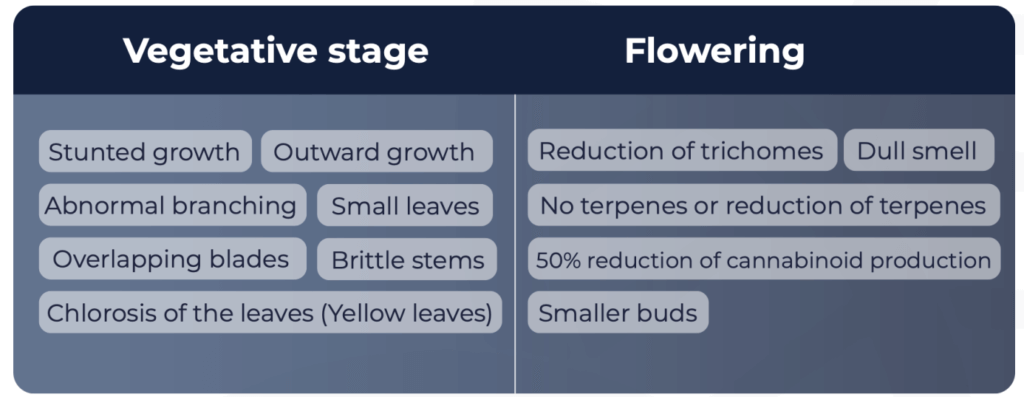
These plants will have fewer traces of trichomes in their structure. Detecting HLV on time is crucial to avoid an existential threat to the entire garden.
Botrytis Cinerea
Botrytis Cinerea, or bud rot, is a fungus that damages the tender parts of plants in areas of high humidity. This necrotrophic fungus will invade damaged tissue. The symptoms include smaller buds, the development of gray mass spores, and brown, water-soaked spots found on leaves. A major consequence of this fungus is that it can kill cannabis plants within a week.
Lettuce Chlorosis Virus
Much like Botrytis Cinerea, Lettuce Chlorosis Virus can potentially destroy an entire garden. Likewise, Lettuce Chlorosis Virus occurs in lettuce grown in southern California. The plants change into a frail yellow color. They will become very brittle and stunted. One way to prevent the virus from spreading is to take a sample of tissue from a cannabis plant and perform qPCR tests to make sure the plant is virus free.
Cannabis Cryptic Virus
Cannabis Cryptic Virus is a double-stranded RNA virus causing subtle symptoms to plants. Some of these symptoms include smaller flower quality and stunted growth. Thus, this virus can affect plants by producing fewer terpenes, cannabinoids, and trichomes, which are three essential components that serve different purposes for cannabis plants.
Alfalfa Mosaic Virus
Another pathogen is Alfalfa Mosaic Virus, the virus starts by killing cells within a plant and this can be a potential problem for groups of plants. Aphids, small insects, will begin to infect one plant after another as they move and transmit the virus instantly. Seed transmission is also a possibility. There’s no known cure so it is best to care for plants to avoid infection from this type of virus. The symptoms are the same as many of the previous viruses and diseases; stunted growth, slower yield, and calico or yellow color is typically seen on leaves. The good thing is that this can be detected on time by performing serological tests, or antigen and antibody tests to help prove immune status.
Beet Curly Top Virus
Lastly, Beet Curly Top Virus is a dangerous plant virus containing a single-stranded DNA that can affect all kinds of plants, especially cannabis plants, giving them a serious infection. Symptoms include showing a yellow color with purple veins, leaves beginning to curl, seedlings dying out, and deformation beginning at the buds. Since this virus contains a protein carrying a unique code that allows for host cell replication if the virus is not detected on time the cannabis plants will die.
Recognizing the danger these pathogens pose to cannabis plants, and acknowledging their potential to prevent cultivation is very important for growth and success.
If you would like to know more about cannabis pathogens and how to prevent infections in your garden, download our free guides about How to treat Infected Material and The Ultimate Hop Latent Viroid Guide.
Keep growing safe and healthy cannabis!
 Author: Angel Fernandez, CEO & Co-Founder at MyFloraDNA. “It is time to fill in the gap between DNA Sciences and Agriculture. MyFloraDNA is willing to show the huge opportunities that exist for modern genetics in agriculture. Now, it is time for another agricultural revolution”
Author: Angel Fernandez, CEO & Co-Founder at MyFloraDNA. “It is time to fill in the gap between DNA Sciences and Agriculture. MyFloraDNA is willing to show the huge opportunities that exist for modern genetics in agriculture. Now, it is time for another agricultural revolution”
Co-author: Felipe Cisternas, Intern at MyFloraDNA
Editor: Ashlyn East, Intern at MyFloraDNA
About MyFloraDNA: We are a genomic laboratory based in Woodland California, delivering modern genomics for the cannabis industry. MyFloraDNA provides data-driven decisions to help breeders increase their plant yields.
Our services include Trait detection (cannabinoid profile and sex/gender ID), Pathogen Detection, and Genetic Validation Services. We offer breakthrough solutions using the inner power of your plants.
Who asks if you think you have an infection in your garden?
We highly recommend you consult with DNA Laboratories. They will guide you through the process, test your plants, and let you know if they are infected with HLV or not.
Member Blog: Report Shows Inflation Will Reduce Dispensary Profits – Here’s What You Should Do

by Lee Johnson, CBD Oracle
A new survey from CBD Oracle found that if inflation drives cannabis prices up, most customers will start to buy less cannabis. Unfortunately, inflation isn’t going anywhere anytime soon, currently standing at 8.3%, and things are very competitive for both dispensaries and growers. Plus, the survey shows that the fear that customers will go to a competitor if you raise prices is actually very justified. So what can companies do? We’ve put together some suggestions that play on consumer psychology to help you stay profitable.
The Survey: Why It Looks Bad for the Industry
The survey from CBD Oracle asked 1,450 Americans in adult-use states about their buying habits and how they may change with inflation. While there were many results, the most interesting ones concerned how people would respond to more inflation and the price of cannabis increasing.
They found that 54% of respondents would buy less cannabis if prices increased as a result of inflation. Although over a third (37%) would buy around the same amount, it’s clear that there will be some impact on companies’ bottom lines. The survey also asked about the maximum amount people would be willing to pay for an eighth (around 3.5 g) and found that while 83% would pay $30, only 57% would still buy at $40.
But with increased prices for everyone from growers to dispensaries, it’s difficult to make ends meet at current prices. Mature markets like Colorado have an even bigger issue, with more than enough stock and tons of competition, so increasing prices may really feel like a gamble. The situation is totally unsustainable, and around 30% of dispensaries will be raising prices in the near future, if they haven’t already.
Andrew Livingston, Director of Economics & Research at Vicente Sederberg commented to us, “Cannabis is clearly not ‘inflation proof.’ Companies struggle to operate profitably as their cost of labor, distribution, and input ingredients climb along with prices across the rest of the economy.”
Raising Prices While Retaining Customers: A Guide for Dispensaries
The survey shows that the problem is on the horizon, but what’s the solution? Here are some suggestions.
Use Price Anchoring
Anchoring is a very useful psychological concept for dispensaries, and there are many ways you can benefit from it. The way it works is really simple. Imagine you have a “regular” price on the tag crossed out, and a sale price below it. Even if the sale price is still higher than customers might want to pay, customers note the crossed-out price and then look at the other relative to the original amount. So if your eighth is labeled “$35 $25,” customers “anchor” onto the $35 and the $25 seems like a bargain. This specific type is called strike-through price anchoring.
Anchoring Through Product Grouping
Price anchoring can be very powerful when used intelligently. For example, you could have your biggest-selling product on the shelf, but with a much more expensive strain beside it, ideally marked and labeled such that it’s hard to ignore. While very few customers will pay for that $50 eighth, that will make the $30 one sat beside it look much better.
Costco-Style Anchoring
In this approach, you arrange your store so that higher-price items greet customers – again, made hard to ignore through ads and positioning – and they anchor onto higher prices. Then as they make their way into the store and see your regular prices, they seem cheaper, even if they haven’t changed or have even increased.
Raise Prices Elsewhere to Keep Cannabis Cheap
You can also try to balance less profitable products out with other items. As McKinsey & Company suggests, raising prices on secondary and tertiary items (think grinders, bongs, vape pens, and other accessories) can help you recoup losses on key-value items (cannabis products). Combined with other approaches, this can be a clever way to boost profits while minimizing the risk customers will simply go elsewhere for weed.
Focus on Your Brand
With over half of dispensary customers sticking to the same seller, one way to minimize the impact of inflation is to make your brand their brand. Shopify’s report on the Future of Retail recommends focusing on your brand story (why are you in business? What sets you apart from the competition?), showing that your values align with customers’ and treating your employees as a “brand audience.” If you educate your employees about your brand, you will make them brand evangelists, improving customer loyalty as a knock-on effect.
Cut Costs Wherever Else You Can
Simply reducing costs on packaging – child-proof plastic packets rather than glass, for instance – can help you stay in profit without pushing costs to customers. Freezing hiring or even laying off staff is another alternative. This isn’t ideal, but if there are ways you can streamline, automate or digitalize processes, you may be able to cut back until the economy gets back on its feet.
Collect Data and Adapt
Arguably the most important thing you can do alongside any of these changes is to improve your data collection and response process. This is simply so you know the impact of the interventions as quickly as possible. You need to combine this with an enhanced decision-making process so you can make company-wide changes quickly and efficiently. It’s unlikely you’ll be able to make one set of changes and leave it that way, so set up systems to streamline the process for the future.
Conclusion: Remember, We’re All in This Together
With the report showing tough times are likely ahead for the cannabis industry, the most important thing to remember is that basically every dispensary in your state is in the same boat. If you’re friends with any other businesses in your area, talk to them about it and how they’re planning on responding. If prices must rise, it’s much better if you can present a united front to consumers. One dispensary raising prices might be a death sentence; all dispensaries raising prices is just inflation, plain and simple. Be up-front with each other and customers, and you’ll be surprised at how well you can pull through.
 Lee Johnson is a writer at CBD Oracle who has been covering science, vaping, and cannabis for over a decade. He focuses on research-driven deep dives into topics ranging from medical uses for CBD to industry and user statistics, as well as general guides and explainers for consumers. He is a passionate advocate of both CBD and cannabis, and a strong believer in informed choice for consumers.
Lee Johnson is a writer at CBD Oracle who has been covering science, vaping, and cannabis for over a decade. He focuses on research-driven deep dives into topics ranging from medical uses for CBD to industry and user statistics, as well as general guides and explainers for consumers. He is a passionate advocate of both CBD and cannabis, and a strong believer in informed choice for consumers.
CBD Oracle is a cannabis consumer research company working to improve the safety and transparency of cannabis products, producing in-depth research pieces, along with long-form analysis of social and legal issues.
Member Blog: How Brands Can Help Cannabis Decriminalization

By Mack Bush, King Palm
There has been a steady movement for the decriminalization of cannabis worldwide. Many organizations call for their governments to allow recreational and medical cannabis, and it’s hard to deny how valuable the cash crop can be for the local economy. Learn how some cannabis brands are contributing to decriminalizing cannabis and making an impact.
As it stands, 19 U.S. states have fully legalized cannabis, and another 19 have medical marijuana programs. While this is fantastic progress, it’s still leaving many people convicted of drug crimes, medical patients, and minorities behind. While some places go the extra mile, there are still many places where it’s a punishable crime with the smallest amount of cannabis. Cannabis laws continue to evolve to protect users, such as the new California law that protects employees from smoking outside work hours.
A bill to decriminalize marijuana passed in the U.S. House in April, but there’s not a lot of hope that Congress will take it up. However, the fact that it was proposed shows that recreational and medical cannabis is becoming closer to the mainstream.
Global Cannabis Decriminalization
Canada, Mexico, South Africa, Thailand, and Malta have legalized adult-use cannabis. The list is relatively short and shows that there’s still progress worldwide.
It’s become clear that many think it doesn’t make sense for people to go to prison for cannabis possession. Programs have been set up in most states and some countries to expunge cannabis possession records and free people who are locked up unjustly.
Here’s a quick introduction to some of these programs and how states, businesses, and individuals push cannabis decriminalization and legalization forward.
States Create Social Equity Programs
A common critique of the cannabis industry is that it’s dominated by white people who were never negatively impacted by anti-marijuana laws. Social equity programs in many states are working hard to level the playing field.
While each state has different qualifications, eligible people must live in an area strongly affected by high arrest and imprisonment rates for cannabis activity. Applicants might also receive extra assistance if they were arrested or convicted of marijuana crimes before legalization.
Some businesses also offer reduced product prices, grants, and loans for cannabis enterprises founded using social equity programs. This makes it easier for minorities to get the funding they need to start the industry.
Programs To Help Minorities with Cannabis Jobs
Not everyone who wants to get involved in the cannabis field is interested in running their own business. Some organizations are also making it easier for people of color to find jobs in the field.
The Minority Cannabis Academy is a New Jersey program that helps young Black Indigenous people of color find their vocation in the cannabis industry. It trains them to work as budtenders in existing dispensaries, giving them a leg up for employment.
In Illinois, cannabis companies can expedite their application for a license if the majority of their staff has been convicted of a cannabis-related offense in the past. This incentivizes businesses to hire minorities and people who need help from these programs.
More programs like these should be developed nationwide if we want a positive representation of BIPOC in the cannabis industry.
Grants Given to Provide Legal Assistance for Expunging Nonviolent Cannabis Crimes
Having a marijuana conviction on your record can have lasting consequences. Drug convictions come up in background checks, and since they carry a significant stigma, people can lose out on employment opportunities when a company judges them harshly for their past.
A cannabis conviction can also make it difficult to rent an apartment or buy a home. Plus, people with drug convictions have been denied student loans and other loans from financial institutions.
When Illinois legalized cannabis in 2019, it was important to lawmakers that people who were convicted for marijuana crimes previously were able to clear their records.
An excellent organization focused on eliminating people’s cannabis records called the Illinois Equal Justice Foundation is taking a step forward. They will award over $1.4 million in grants spread throughout 18 organizations in the state to help rid people of their cannabis records. The funding will assist legal aid groups, so they can represent people in court and are committed to educating people about their expungement options.
Thailand has pushed its efforts even further. When the country delisted cannabis as a narcotic in June, they also released 3,071 inmates who had been convicted of cannabis-related crimes.
Canada has issued pardons for people with previous marijuana convictions for several years. The process can be slow, but the government feels strongly that these people should be released, and their records wiped clean.
These models show that it’s possible to legalize marijuana while still caring for people whose criminalization has been negatively impacted. Experts are hopeful that President Biden will free individuals in jail for marijuana possession, but the future in the United States remains unclear.
How Brands Can Help Impact Positive Change In The Right Direction
King Palm is a cannabis smoking accessory brand that has created a Last Prisoner Project rolling tray to help spread awareness of that non-profit organization.
This cannabis smoking accessory brand is donating to the Last Prisoner Project. This nonprofit organization is committed to freeing people convicted of marijuana-related crimes.
The organization works hard to advocate for bills that would free people from prison for marijuana offenses, and once people are freed, they help them integrate back into their communities.
Expungement Assistance
Many states are setting up expungement assistance programs that anyone can access. The process can take time and be confusing, but many people find it extremely worthwhile.
In 2021, Michigan passed the Clean Slate Act, which expanded the types of crimes that can be expunged. Some expungements will even be automatic under the law. The state says hundreds of thousands to millions of people are now eligible for their criminal records to be wiped clean.
Another strong member of the National Cannabis Industry Association is Cannabis Equity Illinois. They help community members expunge or seal their criminal records for cannabis and also advocate for automatic expungement. They also provide Know Your Rights seminars, so no one is criminalized for cannabis use.
Looking for help expunging your legal record with cannabis? Many areas have expungement events, and you can find exactly what you need to do on your state’s website.
Support for cannabis decriminalization is growing, but there’s still a long way to go. Luckily, many governments, businesses, and nonprofit organizations are doing their part to make cannabis mainstream and help minorities make their way up through the budding industry.
 Mack Bush (they/them) is a freelance writer who is passionate about sharing the joys of cannabis with the world. They manage their fibromyalgia with medical marijuana, and it’s opened up new doors and improved their quality of life. They live in Grand Rapids, Michigan with their cats, Rigatoni and Jasper. Find out more about their work at mackbush.com.
Mack Bush (they/them) is a freelance writer who is passionate about sharing the joys of cannabis with the world. They manage their fibromyalgia with medical marijuana, and it’s opened up new doors and improved their quality of life. They live in Grand Rapids, Michigan with their cats, Rigatoni and Jasper. Find out more about their work at mackbush.com.
King Palm is one of the leading cannabis companies in the world for joint wraps, pre-rolled cones, and rolling papers. Their specialty palm wraps are made from Cordia leaves and allow you to get in touch with nature while you smoke. They also create quality smoking accessories, including electronic devices like concentrate vapes and nectar collectors, as well as lighters, rolling trays, grinders, and ashtrays. Find out more about their products at kingpalm.com!
Member Blog: ESG Initiatives and Potential Impacts on Cannabis CRE
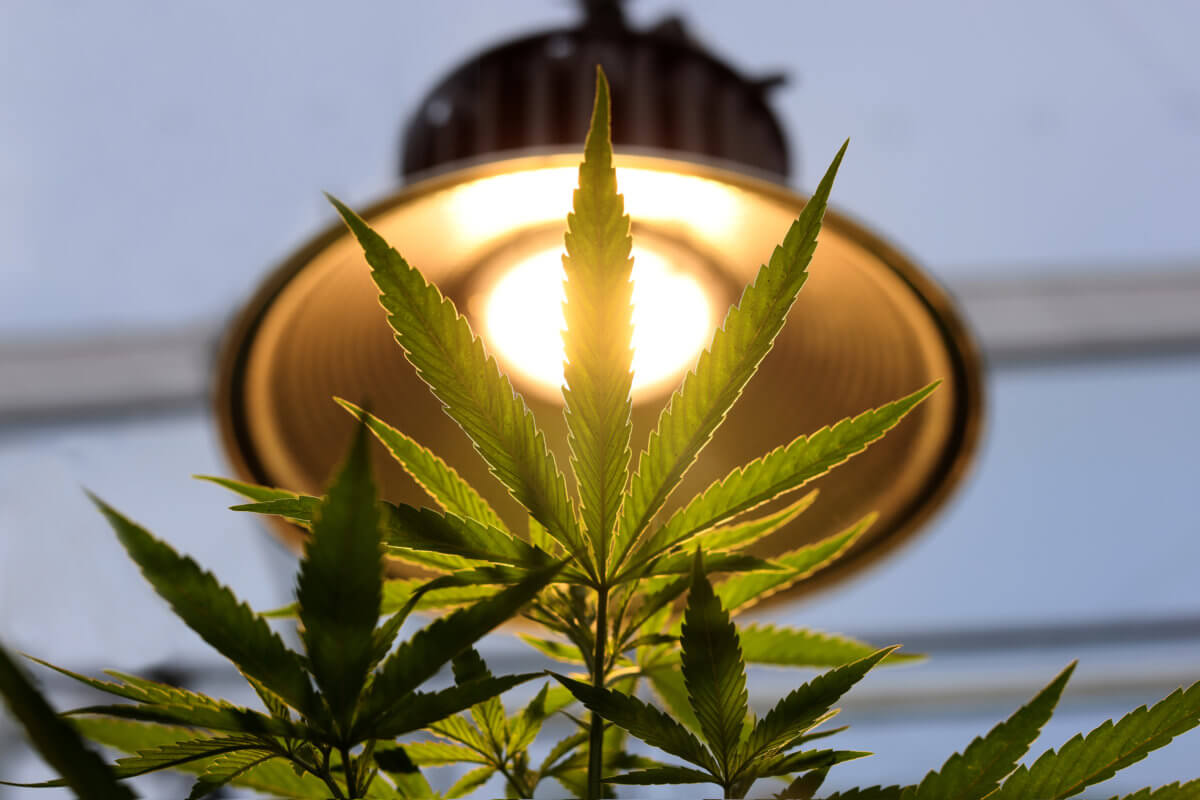
by Bryan McLaren, CEO and chair at Zoned Properties, Inc.
Environmental, Social, and Governance (ESG) initiatives are central to the evolving business landscape as more organizations dedicate resources to amplify their social impact, execute on purpose-driven goals, and ultimately create long-term value.
Pressure from stakeholders and shareholders has been instrumental in transforming how organizations are planning for the future. In the Accenture Future of Work Study 2021, 65% of employees believe organizations should be responsible for leaving their people “net better off” through work and 71% of consumers believe ethical corporate practices and values are an important reason to choose a brand. But even beyond this shift in demand for company transparency and a more defined investment in communities from corporations, ESG reporting will soon be a necessity for public companies and a variety of financial organizations.
The Securities and Exchange Commission’s climate-related disclosure earlier this year is a major shift in how companies will be structured requiring corporate entities to proactively integrate ESG into their business model.
Though the proposed rules will most likely lead to legal challenges, accepting the realities of where global business stands today and the environmental issues communities are facing should be at the forefront of every cannabis business, whether they are public or private. There will also inevitably be opportunities that develop from these policies to engage with stakeholders and increase value.
Recent data illustrate the positive results of adopting new standards and reporting methods. According to the Accenture Future of Work Study 81% of sustainable stock indices outperformed their peer benchmarks in 2020. ESG focuses on the Triple-Bottom-Line principles, which essentially advocates for a balance between people, profit, and planet when considering any program or project within an organization. Sustainability professionals who have been advocating for both ESG and Triple-Bottom-Line principles will likely not be surprised by these statistics, as their focus on a long-term, balanced approach to creating value can be less subject to the waxing and waning fluctuations that come with the single-bottom-line approach of focusing only on short term profit.
ESG in Cannabis Real Estate
It is essential for cannabis companies to make ESG initiatives a priority as more investors look to these frameworks as potential predictors for future success. Already some cannabis license applications are requiring environmental impact statements and state-level environmental compliance documentation.
The cannabis industry also has a unique opportunity as a relatively young and emerging industry. Many cannabis companies already have the capacity and infrastructure to adapt swiftly to changing regulations. In the new era of ESG, cannabis corporations are in the position to make these principles a part of their core narrative early on and become more attractive to investors.
In commercial real estate, here are some of the most relevant ESG initiatives to consider.
- ENERGY MANAGEMENT (e.g. Utility Installation & Efficiency)
- WATER & WASTE WATER MANAGEMENT (e.g. Water Use & Treatment)
- PRODUCT DESIGN & LIFECYCLE MANAGEMENT (e.g. Building Operations)
- PHYSICAL IMPACTS OF CLIMATE CHANGE. (e.g. Indoor Air Quality)
These are based on the Sustainability Accounting Standards Board’s (SASB) materiality finder for real estate, which also provides insight across a broad range of industries for those interested in other sectors.
There are many ways to begin monitoring and collecting data that will help provide a clearer picture of a cannabis facility’s operational efficiency. For facilities already existing in the cannabis ecosystem, property owners and operators should consider investing in eco-friendly waste management initiatives, repurposing materials when possible, and ensuring recycling capabilities at every operation. Utilizing technology platforms to track water consumption and overall environmental performance will allow an operation to investigate what opportunities exist to reduce energy use by replacing equipment or introducing more natural ventilation into spaces to reduce heating and cooling use.
For those in the early stages of a cannabis real estate project, industry professionals should make ESG initiatives a part of their buildout strategy from the beginning. This means addressing the potential physical risks and impacts on a building where you’re looking to develop. Is the property in a flood zone and at risk of rising sea levels? Is the potential building site exposed to other natural disasters like wildfires?
Many of these environmental and climate-related risks also intersect on a social level. In cannabis real estate, companies should consider whether a building and its materials are safe for workers and the larger community. For example, due to changing weather patterns and increasing temperatures, air quality may decrease or there may be extended periods of drought. Planning ahead to mitigate some of these risks is essential, from considering the introduction of cisterns to collect rainwater during extreme weather that can be repurposed in drier seasons, as well as on-site green spaces and rooftop gardens that can generate cooler temperatures while providing a welcoming environment for employees.
The key to preparing for ESG requirements and ensuring that your organization is ready to tackle these issues is to incorporate these specific needs directly into project objectives and having experts on the project team that understand both short-term requirements and long-term opportunities.
Overall, cannabis real estate needs to be developed with geography and locality risks in mind. It’s not only a necessity to make energy-efficient and sustainable strategies a part of a facility’s infrastructure, but also consider where and how that property will be impacted in the future.
 Bryan McLaren serves as the Chairman and CEO of publicly traded Zoned Properties, Inc. (ZDPY). As a licensed Realtor, certified Green Roof Professional,and former City Sustainability Commissioner, with multiple Masters degrees focused specifically on Sustainable Development, Bryan has navigated state regulatory programs for environmental projects and cannabis commercial real estate projects nationally across hundreds of development projects.
Bryan McLaren serves as the Chairman and CEO of publicly traded Zoned Properties, Inc. (ZDPY). As a licensed Realtor, certified Green Roof Professional,and former City Sustainability Commissioner, with multiple Masters degrees focused specifically on Sustainable Development, Bryan has navigated state regulatory programs for environmental projects and cannabis commercial real estate projects nationally across hundreds of development projects.
About Zoned Properties, Inc. (OTCQB: ZDPY):
Zoned Properties is a leading real estate development firm for emerging and highly regulated industries, including regulated cannabis. The company is redefining the approach to commercial real estate investment through its integrated growth services.
Headquartered in Scottsdale, Arizona, Zoned Properties has developed a full spectrum of integrated growth services to support its real estate development model; the Company’s Property Technology, Advisory Services, Commercial Brokerage, and Investment Portfolio collectively cross-pollinate within the model to drive project value associated with complex real estate projects. With national experience and a team of experts devoted to the emerging cannabis industry, Zoned Properties is addressing the specific needs of a modern market in highly regulated industries.
Zoned Properties is an accredited member of the Better Business Bureau, the U.S. Green Building Council, and the Forbes Real Estate Council. Zoned Properties does not grow, harvest, sell or distribute cannabis or any substances regulated under United States law such as the Controlled Substance Act of 1970, as amended (the “CSA”). Zoned Properties corporate headquarters are located at 8360 E. Raintree Dr., Suite 230, Scottsdale, Arizona. For more information, call 877-360-8839 or visit www.ZonedProperties.com.
Twitter: @ZonedProperties
LinkedIn: @ZonedProperties
Member Blog: 4 Budtender Onboarding Tips To Help Keep You Compliant

by Tommy Truong, KayaPush
A recent survey by Headset.io found that 55% of budtenders leave their jobs within the first year of employment.* But why?
Some believe improper onboarding could be a culprit.
First impressions matter – and improper onboarding can leave budtenders feeling underprepared and unappreciated. Moreover, budtenders who don’t receive proper compliance training might be terminated due to compliance infractions and could even be at personal risk for their errors.
Luckily, by setting up solid budtender onboarding SOPs that put compliance first, you are more likely to keep great hires – and avoid compliance infractions.
The following information will help dispensary owners implement hiring and training strategies to increase retention, avoid compliance infractions, and simplify dispensary onboarding.
1 – Look into legal before you hire.
Compliant onboarding starts with understanding your budtenders’ requirements to work at your dispensary.
Every state has unique requirements regarding background checks, legal age, and budtender certifications – so it is essential to research each of these elements before you begin the hiring process.
Once you have established your hiring guidelines regarding legal requirements – you can take it one step further and set up an applicant tracking system that is customized to only reach out to applicants who qualify for your set terms.
Using tools that automate these processes will make compliant dispensary hiring easy.
Social equity hiring initiatives in cannabis
While we’re on the topic of hiring for your cannabis dispensary, we would be remiss if we didn’t mention the importance of researching potential social equity programs for dispensary hiring opportunities.
You can use these resources to find qualified social equity candidates for your dispensary based on the state in which you are located.
2 – Have an organized onboarding documentation process.
The next step to a smooth and compliant onboarding process is to know all the forms you need to provide and gather from your new hire.
If you are an American business owner, the forms you will need to collect from your employee include:
- W2
- Criminal record check verification
- 1-9
- State Tax Form
- ID or Passport
- Social security information
- A void check
- A signed employer agreement
- Any certifications you have requested they acquire
The forms you will need to share with your new hire include:
3 – Use self-serve onboarding software.
Business owners who don’t use employee onboarding software manage a lot of paperwork.
From chasing new hires around for signatures or documents – to figuring out the best way to store things – it’s a time-consuming headache, and it’s not ideal.
With dispensary self-serve onboarding software, dispensary owners can eliminate 100% of their paperwork – and increase their compliance in many ways.
Here’s how it works. When a new hire joins, a dispensary owner can share their onboarding link, where their new hire will upload digitized documents directly into the system for central storage.
If any documentation is missing, the system will send a reminder to ensure they provide all the information needed for dispensary owners to stay compliant.
4 – Provide compliance training for budtenders
Compliance training should be a critical part of the budtender onboarding process – but what does that mean?
For budtenders, there are four main areas of compliance to master: How to sell products to customers and with a POS system, how to handle products, and overall regulations comprehension.
Selling products to customers training might include:
- Learn how to greet guests in a compliant way
- How and when to properly ID guests
- Knowledge of strains, potency, and effects
- Understanding different types of products based on clients’ needs
POS training might include:
- Knowing how to input ID information
- Learning how to ring in products correctly
- Understanding product limits per customer guidelines
- Knowing how to use and report sold products with a compliant POS
- Understanding the compliance factors behind customer loyalty programs and incentives
Product handling training might include:
- How to properly package product
- How to showcase product
- How to inventory product
- How to handle products
Overall regulation comprehension might include:
- Current cannabis laws in the state or city
- Current compliant regulations
- Store opening and closing SOPs for compliance
- Security SOPs for compliance
- How to use cannabis software tools for clock in’s and schedules.
What are other tips to stay compliant?
Compliance is one of the most challenging aspects of running a cannabis dispensary – however, if you surround yourself with the right team, use cannabis software built for dispensaries in your state, and check in often on regulatory updates – you will be alright.
*(Headset.io, 2022 An analysis of employee turnover in cannabis retail)
 Author Tommy Truong is the CEO at KayaPush; the cannabis software helping dispensary owners manage their employee HR, scheduling, and payroll. KayaPush also integrates with leading dispensary POS systems. Tommy loves hot sauce, fried chicken, and running with his Boston terriers
Author Tommy Truong is the CEO at KayaPush; the cannabis software helping dispensary owners manage their employee HR, scheduling, and payroll. KayaPush also integrates with leading dispensary POS systems. Tommy loves hot sauce, fried chicken, and running with his Boston terriers
KayaPush delivers an innovative, unified compliance solution that meets payroll and HR needs without compromising speed and accuracy. Implementing KayaPush will save you time and money and help eliminate the financial risks associated with non-compliance.
Member Blog: How to Prepare a Winning Dispensary License Application

by Gary Cohen, Cova Software
The cannabis industry has come a long way in the U.S. Although we still await federal legalization, many new states have recently jumped on the bandwagon, and legacy states are awarding more social equity licenses. While New Jersey and Mississippi will be opening their first dispensaries by the end of 2022, New York has started accepting applications for CAURD licenses from justice-involved individuals. But scoring high points on your dispensary license application can be challenging, especially with all the stringent requirements. Here are some quick tips to help you stand out and prepare a winning dispensary license application.

Follow your State Cannabis Authority’s Guidelines
Every state in the US has different guidelines and regulations for a cannabis dispensary license. Do a thorough review of all the information available on your state cannabis authority’s website, and keep a look out for when they will start accepting applications. Most states accept only electronic applications, and you will likely have to create an account online on a designated website and link your company’s official information. For an application to be deemed complete, a response to each criterion specified must be included, along with the required documents.
Ensure You Qualify and Apply for the Right Category
To be eligible to submit a cannabis dispensary license application, you must reside in the state where you are applying or must be registered to do business in that state. Many states are awarding conditional cannabis business licenses to social equity applicants first or prioritizing applicants impacted by the war on drugs to build an equitable cannabis industry. If you qualify for any of these categories, ensure that you apply for the right one to expedite the processing of your dispensary license application.
Connect with the Community Where you Plan to Operate
Some states require your dispensary to be located in the municipality you live in, and you will be awarded a license only for a particular zone. Community reach and impact are also criteria laid down by some cannabis authorities, and you must establish connections with not just local and state officials but also other people who can help you understand the bigger picture better. For example, New Jersey and New York want you to explain the positive community impact your dispensary business will have. If you don’t connect with the community, you won’t be able to align your vision with their needs in your dispensary license application.
Fortify Application with a Business Operations & Security Plan
After familiarizing yourself with the license requirements and structure, you must dive into how you can prepare the best possible application to score higher points on every measure. For example, to obtain a conditional dispensary license in New Jersey, 40 out of 100 points are for your dispensary business plan, and another 50 points are for a regulatory compliance plan. One of the most crucial aspects of this is a dispensary operations plan that you must include in your application. This plan helps authorities understand how your dispensary business will comply with all cannabis laws and regulations and ensure safe access to cannabis for your customers.
Compliance is the Name of the Game
The detailed plans included in your cannabis dispensary license application must also mention the technology provider you intend to partner with, and choosing a compliant cannabis retail platform will help you fortify your application further. Prepare a winning dispensary license application by downloading Cova Software’s free template, Dispensary Operations and Security Plan, which will serve as a comprehensive guide to writing a winning plan for a successful cannabis retailer license application.
 Gary Cohen is the CEO of Cova Software, the fastest growing technology brand in the cannabis industry. Cohen’s focus has been driving the company’s overall strategy, including its vision, go-to-market plan, and strategic development. Since joining the cannabis industry in 2016 and launching Cova commercially in 4q17, Cohen has led Cova to dominate the enterprise sector for dispensary Point of Sale, while forging client relationships with hundreds of single-store retailers across North America.
Gary Cohen is the CEO of Cova Software, the fastest growing technology brand in the cannabis industry. Cohen’s focus has been driving the company’s overall strategy, including its vision, go-to-market plan, and strategic development. Since joining the cannabis industry in 2016 and launching Cova commercially in 4q17, Cohen has led Cova to dominate the enterprise sector for dispensary Point of Sale, while forging client relationships with hundreds of single-store retailers across North America.
With Cova’s cannabis POS and its excellent integrations with eCommerce and delivery services, the online order automatically pops up for the budtender to tender the sales, and the POS system updates inventory once payment is approved. Cova offers multiple eCommerce solutions to choose from, as per your needs and budget, and you can legally sell cannabis online stress-free while staying compliant with strict government regulations.
Equity Member Spotlight: Osbert Orduña – The Cannabis Place

 NCIA’s editorial department continues the Member Spotlight series by highlighting our Social Equity Scholarship Recipients as part of our Diversity, Equity, and Inclusion Program. Participants are gaining first-hand access to regulators in key markets to get insight on the industry, tips for raising capital, and advice on how to access and utilize data to ensure success in their businesses, along with all the other benefits available to NCIA members.
NCIA’s editorial department continues the Member Spotlight series by highlighting our Social Equity Scholarship Recipients as part of our Diversity, Equity, and Inclusion Program. Participants are gaining first-hand access to regulators in key markets to get insight on the industry, tips for raising capital, and advice on how to access and utilize data to ensure success in their businesses, along with all the other benefits available to NCIA members.
Tell us a bit about you, your background, and why you launched your company.
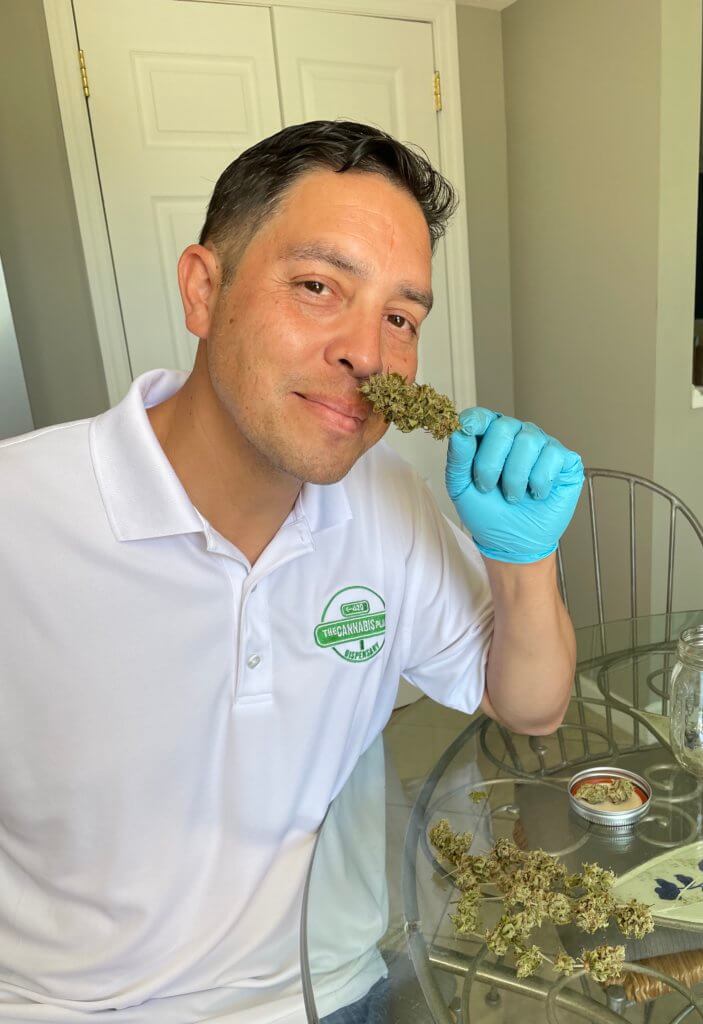 I am a first-generation Latino of Colombian descent, Spanish was my first language and my dad spent most of my youth incarcerated. I grew up in NYC Public Housing projects, and I have first-hand knowledge of the indignity of what it feels like to personally be stopped and frisked nearly 100 times which is what happened to me as a kid and young adult for doing nothing else than being a poor Latino growing up in the hood. I was an Education Opportunity Fund scholar and the first in my family to go to college, where I received a degree in business, and a graduate certificate in law. I earned the designation of Disabled Veteran while serving in Iraq with the United States Marine Corps, and I am also a 9/11 first responder. I retired after a career in public service, and have worked as an entrepreneur for over 10 years, and know what it takes to start a business from scratch, without a rich uncle, generational wealth, or rich financial backers.
I am a first-generation Latino of Colombian descent, Spanish was my first language and my dad spent most of my youth incarcerated. I grew up in NYC Public Housing projects, and I have first-hand knowledge of the indignity of what it feels like to personally be stopped and frisked nearly 100 times which is what happened to me as a kid and young adult for doing nothing else than being a poor Latino growing up in the hood. I was an Education Opportunity Fund scholar and the first in my family to go to college, where I received a degree in business, and a graduate certificate in law. I earned the designation of Disabled Veteran while serving in Iraq with the United States Marine Corps, and I am also a 9/11 first responder. I retired after a career in public service, and have worked as an entrepreneur for over 10 years, and know what it takes to start a business from scratch, without a rich uncle, generational wealth, or rich financial backers.
In late 2020 and early 2021, I had the opportunity to visit 50 non-MSO recreation and medical dispensaries in five states on the east and west coast. I wanted to learn more about dispensaries and best practices across the industry, but my trip opened my eyes to a different reality. Forty-nine of the dispensaries were owned by white males and one was owned by a white female, not one owner looked like me or shared a similar background. None of these dispensary owners had been stopped and frisked hundreds of times for no other reason than just because they lived in an area with historically high rates of arrests and enforcement from over-policing. Yet they were now engaged in an industry that seemed to exclude us. My trip left me sad but determined to enter the cannabis market so that people who look like me who came from the struggle of the streets, and were collateral damage in the war on drugs could have a chance. I was determined to create a positive example for Latinos and others to follow.
What unique value does your company offer to the cannabis industry?
The Cannabis Place offers a unique value proposition which is our commitment to launching as a union cannabis dispensary on day one. As of yet, we are the only dispensary in the state of New Jersey and the nation to propose this. By launching our business as a unionized shop we are being a partner to our Jersey City, NJ community. Our value proposition promises that we will be a responsible and proactive member of the community that provides union career opportunities with true living wages that will empower our team members to provide upward mobility for themselves, their families, and the greater community. Furthermore, we are engaged as a Workforce Development partner with Cornell University, the Workforce Development Institute, and Hudson County (NJ) Workforce Development Board. With these partnerships, we will develop standardized training modules that will be utilized to train prospective dispensary workers and provide opportunities for those seeking cannabis careers in this new and emerging industry.
Our mission: To provide high-quality cannabis to clients with a consistent product and first-class service they can trust. To build our brand on the core values of client service and care, while maintaining the highest standards of quality, integrity, and community outreach.
What is your goal for the greater good of cannabis?
As the CEO of The Cannabis Place, our primary goal for the greater good of cannabis is to advocate and support a proactive approach to adult-use by providing a local and safe environment to dispense cannabis products. We operate as a social impact cannabis brand and are dedicated to providing consistent access to safe and reliable cannabis products that are ethically grown and sourced. Our aim is to launch the first unionized cannabis dispensary in New Jersey, leading by example, and demonstrating to other businesses that true success is based on placing people over profits.
Our goals are as follows:
- Be an accelerator for generational wealth-building opportunities among our employees from the community
- Be a reliable source for cannabis education and awareness
- Utilize our Community Impact grants to assist and support outreach in areas that have been disproportionately impacted
Our advocacy at The Cannabis Place is based on workers rights, especially organization, fairness and quality healthcare. We believe that it should be easier for people in all job fields to organize. At The Cannabis Place we support the implementation of legislation that will raise the minimum wage floor for all workers in our community, to provide for true living wages that place people over profits. Workers in all industries deserve more from the moment they are hired. Like many others I grew up as part of the working poor, in public housing with limited minimum wage job opportunities, without healthcare and with minimal alternatives to life on the streets. At The Cannabis Place we believe that by providing our workforce with union careers with true living wages and full benefits, our team members, their families and their communities will feel the immediate difference of financial stability, long-term growth, and the impact of upward financial mobility to help them support their family and to build a better life.
What kind of challenges do you face in the industry and what solutions would you like to see?
 Latinos are consistently underrepresented in terms of business owners throughout all industries. Now when you focus specifically on cannabis and look at a national level, just 5.7% of all license types are held by the Hispanic community. I have seen challenges in the cannabis industry in two key areas, access to capital and the real estate market. It takes money to make money so if you grew up poor, without generational wealth, no rich uncle, no hedge fund connections or oligarchs to call on, how do you raise funds to have the millions that are needed to launch a dispensary or grow? Next and along the same lines is real estate. A lot of landlords won’t lease to cannabis businesses but unfortunately, our experience has been that again a predatory market exists where cannabis rental rates are 2 to 10 times the normal lease rates for the area. The other option is to buy a commercial parcel which brings us back to issue #1 – access to capital. I am ever the optimist, and I see the Latino community growing in the legal cannabis industry as entrepreneurs, c-suite members, and as leaders in the industry bringing our unique insight and sabor to the industry while creating opportunities for generational wealth for our community. In order to get there, we need to bridge the gap through social equity grants and loans that can help Hispanic cannabis entrepreneurs raise enough capital to start their business, and receiving financial education is also crucial for Hispanic entrepreneurs in multiple phases of the cannabis business planning timeline.
Latinos are consistently underrepresented in terms of business owners throughout all industries. Now when you focus specifically on cannabis and look at a national level, just 5.7% of all license types are held by the Hispanic community. I have seen challenges in the cannabis industry in two key areas, access to capital and the real estate market. It takes money to make money so if you grew up poor, without generational wealth, no rich uncle, no hedge fund connections or oligarchs to call on, how do you raise funds to have the millions that are needed to launch a dispensary or grow? Next and along the same lines is real estate. A lot of landlords won’t lease to cannabis businesses but unfortunately, our experience has been that again a predatory market exists where cannabis rental rates are 2 to 10 times the normal lease rates for the area. The other option is to buy a commercial parcel which brings us back to issue #1 – access to capital. I am ever the optimist, and I see the Latino community growing in the legal cannabis industry as entrepreneurs, c-suite members, and as leaders in the industry bringing our unique insight and sabor to the industry while creating opportunities for generational wealth for our community. In order to get there, we need to bridge the gap through social equity grants and loans that can help Hispanic cannabis entrepreneurs raise enough capital to start their business, and receiving financial education is also crucial for Hispanic entrepreneurs in multiple phases of the cannabis business planning timeline.
Why did you join NCIA? What’s the best or most important part about being a member through the Social Equity Scholarship Program?
We are a Disabled Veteran and Latino-owned company with a core focus on community impact through social impact so the ability to be a Social Equity Scholarship recipient in an organization like the NCIA, a group who are actually dedicated to ensuring that small cannabis businesses have a seat at the table in Washington, D.C. and beyond, was super important to us. We look forward to learning new information and utilizing networking opportunities to help us grow and succeed in the cannabis industry.
The fact that NCIA is leading change to protect the legal cannabis industry, advocate for our state laws, advance federal policy reforms, and to make this a more inclusive and prosperous space by working together to defend the responsible cannabis industry. Creating more opportunities for small businesses rather than just the wealthiest few is the most important thing for us as members of the Social Equity Scholarship Program.
The Cannabis Place 420 Corp is the first ever Disabled Veteran and Minority Owned Business enterprise to successfully navigate the Jersey City, NJ municipal cannabis dispensary approval process in this new and emerging cannabis market.
Member Blog: The Delicate Issue of Dermal Considerations

by Justin Charneau, Eagle Protect
Skin-related (dermal) issues from the constant wearing of disposable gloves were among the top complaints revealed in various cannabis workplace surveys. Many employees required to don single-use gloves to conduct a variety of job-related tasks – in the cannabis cultivation process and several other industries – remain unaware of the distinct types and qualities on the market, and how they differ. The quality, fit, durability, and functionality of disposable gloves are determined by several factors, including the type, application, raw materials, and manufacturing processes used to produce them.
Gloves by Type and Dermal Risk
Among disposable gloves, there are three primary types – latex, vinyl, and nitrile, each with differing qualities and risks. Here is a snapshot of each variety, along with their associated dermal risks:
Latex – these gloves are constructed of rubber, a snug fit like second skin that is both highly elastic and resilient. They are mostly worn in the medical industry, where a high level of dexterity and tactility is warranted. However, latex gloves can trigger a Type I hypersensitivity reaction to latex and Type IV hypersensitivity reaction to rubber chemicals. Latex-free nitrile gloves have generally superseded this option in the market.
Vinyl – these cheap gloves are manufactured from brittle polyvinyl chloride (PVC) material, prone to a high rate of defects (rips and holes) in the glove barrier, an immediate cross-contamination risk.
Vinyl gloves are manufactured with plasticizers to soften the PVC, which often contain toxic phthalates and chemicals. Many of these ortho-phthalates have been shown to harm reproductive health and brain development. These threats can be absorbed into the glove wearer’s skin, and leach into the food handled which, in turn, can later be ingested by customers. Phthalates in vinyl gloves are highly restricted in Europe and Japan for food handling and were recently banned by the state of Maine.
Vitrile – a blend of vinyl and nitrile. These gloves should be stronger than plain vinyl gloves and less expensive than nitrile. Due to pandemic-related price increases in gloves, the vitrile option has recently grown in popularity. Buyers should beware of cheap nitrile gloves, blended with cheaper vinyl, yet still marketed as nitrile. Vitrile gloves carry the same risks to the wearer, and the products they handle, as vinyl gloves.
Nitrile – these gloves are among the best choice for the cannabis industry, as they protect against harmful chemical substances, and their puncture and tear-resistant qualities are ideal for complex cultivation and processing tasks. They also provide the highest level of protection and durability as a barrier to harmful chemicals and pesticide exposure.
However, nitrile glove allergies can also occur, posing potential problems for the glove wearer. Cheap and toxic raw material ingredients, which reduce glove manufacturing costs, can also cause occupational skin disease (OSD), such as contact dermatitis and Type IV hypersensitivity to rubber chemicals. Accelerators, added to speed up rubber vulcanization during the manufacturing process, are the typical cause of glove contact allergies.
For glove wearers prone to skin allergies and irritation, higher quality gloves and accelerator-free options are a necessity.

Keeping Your Workforce Safe
There are ways and means of reducing the risk of dermal disorders caused by single-use, disposable gloves. The more frequently gloves are worn, the higher the risk. Below are several ways to mitigate the risk of dermal disorders:
- Choose quality nitrile gloves, marketed by reputable suppliers with an extensive history of glove sourcing and experience. Look for well-established company websites, including industry-related blogs, published articles, and resources that demonstrate the supplier’s commitment to quality
- Request proof of factory and third-party audits, as well as HACCP compliance certifications
- Plan to undergo a commercial trial of glove products prior to committing to bulk purchasing. Any established and reputable supplier should be more than happy to ship glove samples for trial usage
- If possible, choose accelerator-free nitrile gloves
- Consider your options for glove types. Be wary of vinyl / nitrile-mixed gloves passed off as nitrile – always sample first before you buy
- If alternatives are available, avoid vinyl gloves
For more information on how disposable gloves can affect your business and productivity due to skin disorders and repetitive hand movement injuries, please read our recent NCIA blog post, “PPE and Staff Efficiencies – How Much Do the Quality of Your Disposable Gloves Matter?”
 Justine Charneau is the head of cannabis industry sales at Eagle Protect, a disposable glove supplier dedicated to the responsible sourcing of quality products that ensure customer safety and impact reduction, ultimately mitigating customers’ risk. Eagle Protect is the only global PPE supplier that is a Certified B Corporation, a designation that a business has met the highest standards of verified performance, accountability, and transparency. She can be reached at justine@eagleprotect.com.
Justine Charneau is the head of cannabis industry sales at Eagle Protect, a disposable glove supplier dedicated to the responsible sourcing of quality products that ensure customer safety and impact reduction, ultimately mitigating customers’ risk. Eagle Protect is the only global PPE supplier that is a Certified B Corporation, a designation that a business has met the highest standards of verified performance, accountability, and transparency. She can be reached at justine@eagleprotect.com.
Member Blog: How Technology Can Ensure An Equitable Cannabis Industry

by Walter Moore, Cognitive Harmony Technologies CEO
The multi-billion dollar cannabis industry is coming to a town near you. With new states passing adult-use legislation every day, it’s only a matter of time before businesses begin opening their doors nationwide.
In states such as New York, the first cannabis business licenses (CBLs) are being given to people who were impacted by the war on drugs and hemp farmers. The effort is a first-of-its-kind approach that is admirable in theory – a positive step toward righting the wrongs that have persistently and unfairly affected people of color – but still leave the door open for challenges in practice.
Simply put, the barrier for entry is too high for most individuals due to the complex and convoluted CBL application process. Between sifting through and submitting thousand-plus page documents and potentially spending hundreds of thousands of dollars to create a perfect, compliant application, new business owners are fighting an uphill battle against multi-state operators (MSOs) who have moved across the country as legalization opens state by state and have the process (and hundreds of thousands dollars needed to afford a dedicated application consulting firm) down to a science.
Legislators may have noble intentions in offering a head-start to people affected by the war on drugs in an effort to correct past wrongdoings and create a distribution of ownership that looks like the people most affected, but if the necessary regulatory framework of the application process is encumbered with more compliance to receive equity benefits, it will be even harder to complete a competitive application – leaving many potential new business owners without a license and the well-oiled machines known as MSOs first in line.
Not to mention the fact that the application process often plays out over years. States will frequently take half a year to review an application and only provide roughly 10 days to fix any deficiencies.
Technology is The Way
While the odds may seem stacked, the technology to close the gap exists and many CBL applicants are finding out how to compete against large MSOs and established players in the market. As someone who experienced everything that goes into the application process, and what is wrong with it, first-hand when I began my career in cannabis, I’ve realized that the only way to effectively compete is by working smarter. Through technology we can create greater access and a level playing field.
There are several key areas where technology (i.e. “working smarter”) is already paving the way for true social equity while applicants embark on submitting a cannabis business license. Document generation, telepresence, language processing, machine learning, artificial intelligence and augmented reality are among areas of interest that savvy CBL applicants can implement into their strategy. By normalizing standard operating procedures (SOPs) across verticals and jurisdictions, companies can provide contextual SOPs directly in front of a user with a simple QR code. Imagine a world where a dispensary employee can access SOPs directly from each piece of equipment or area of a facility with minimal effort simply by scanning a QR code with their tablet.
A Cannabis Industry for All
Laws that benefit a more equitable industry surely help, but in a new industry where the gap between the have and have-nots is already wide and growing rapidly, more steps need to be taken by regulators to eliminate the pay-to-play mistakes that have infested other state cannabis policies such as in my home state of Illinois. In Illinois, there wasn’t a fair cap on the number of CBL submissions for a company, leaving businesses with the most money with an opportunity to submit over 40 times and flood the application pool.
Thankfully, I’m pleased that regulators in New York and New Jersey are doing a better job in this regard, avoiding these unfair situations, but I foresee a highly political zoning situation in New York. Historically, companies that can afford to pay lobbyists and other influential people to get the deals and contracts done, are more successful. I’m not sure what short-term regulatory solution exists for this age-old, persistent issue.
It’s encouraging to see the cannabis legalization movements around the country paired with well-meaning equity and restorative justice initiatives. However, there is still a high barrier to entry presented by the extensive and convoluted cannabis business license application process. Only through advances in technology will this barrier be taken down.
 Walter Moore Cognitive Harmony Technologies CEO & CTO, is an accomplished software architect, financial engineer, and entrepreneur residing in the south suburbs of Illinois. He specializes in architecting elegant, compliant, and scalable solutions to complex regulatory environments in the AdTech, FinTech, Digital Assets, and Cannabis industries. He has a Masters of Science in Financial Engineering and undergraduate degrees in Theoretical Physics and Applied Mathematics.
Walter Moore Cognitive Harmony Technologies CEO & CTO, is an accomplished software architect, financial engineer, and entrepreneur residing in the south suburbs of Illinois. He specializes in architecting elegant, compliant, and scalable solutions to complex regulatory environments in the AdTech, FinTech, Digital Assets, and Cannabis industries. He has a Masters of Science in Financial Engineering and undergraduate degrees in Theoretical Physics and Applied Mathematics.
Walter started Cognitive Harmony Technologies in order to support social equity teams and bring change to an industry which has historically whitewashed the past injustices served in its former prohibition, something which he has experienced firsthand in prior decades. As a cannabis business license owner, Walter knows just how difficult it is to put together a competitive application. He developed the CHT platform in order to help lower the barrier of entry for others willing to put in the hard work of assembling an application, but who would otherwise be priced out of the competition.
About Cognitive Harmony Technologies
At Cognitive Harmony Technologies, our proprietary CHT Accelerator platform is paving the way for true social equity in the CBL application process by developing a meticulous roadmap to create a complete and competitive automated application much like tax preparation software generates tax returns, providing live-support, and offering access to a helpful network of architects, realtors and a range of connections. Additionally, we offer this for a fraction of the cost of what the hundred-thousand-dollar consulting firms that multi-state operators employ, and in some cases it is completely free. Cutting-edge technology is the best tool that an everyday, aspiring entrepreneur can leverage to break into the industry, and make the cannabis sector’s leadership as representative and diverse as the consumers.
Our mission is to open the doors for equitable cannabis business ownership by making the application process easy as filing personal income taxes online. The CHT Accelerator streamlines the entire application process into one easy-to-use software platform so you can create a complete and competitive application. Follow us on LinkedIn or visit our website.
Behind Closed Doors: NCIA at CANNRA’s June Conference

The discussion about the future of cannabis legalization is ongoing, to say the least. Recently, Cannabis Regulators Association (CANNRA) held a two-day conference in early June to gather Marijuana government regulators, trade associations, and businesses. The Cannabis Regulators Association (CANNRA) is a national nonpartisan organization of government cannabis regulators that provides policymakers and regulatory agencies with the resources to make informed decisions when considering whether and how to legalize and regulate cannabis.
Representatives from NCIA participated in the conference – NCIA Board Members Khurshid Khoja (Chair Emeritus) and Michael Cooper (Board Secretary), and we caught up with them in this blog interview to better understand the goals and outcomes of the event.
From a bird’s eye view, what was the overall goal of this conference?
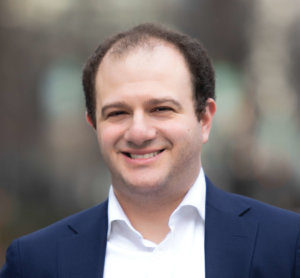 MC: The conference was an opportunity for regulators from around the nation to hear directly from stakeholders on the current and future challenges that face these markets and different models of regulation to tackle them.
MC: The conference was an opportunity for regulators from around the nation to hear directly from stakeholders on the current and future challenges that face these markets and different models of regulation to tackle them.
KK: I’ll add that our own goals, as the current Policy Co-chairs for NCIA, were to better understand the priorities of state and local cannabis regulators across the country, and anticipate future developments in cannabis policy early on, so we could take that back to the NCIA membership and the staff – especially Michelle Rutter Friberg, Mike Correia, and Maddy Grant from our amazing government relations team.
Let’s talk about who was invited to participate in these panel discussions. From cannabis industry associations to those who regulate cannabis, who else was there?
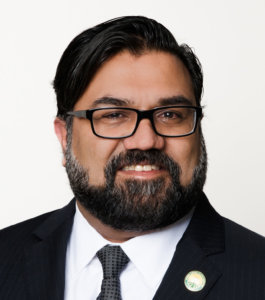
KK: Michael and I each spoke on a panel. The other speakers included reps from federal trade associations, lobbyists, vendors, and ancillary companies who were helping to underwrite the event (along with NCIA). Given that CANNRA is a non-profit that doesn’t receive any funding from their member jurisdictions, and has a single paid full-time staff member, I thought they were still able to obtain a fairly diverse and interesting set of speakers at the end of the day – including NCIA Board and Committee alums Ean Seeb, Steve DeAngelo, Amber Senter and David Vaillencourt (representing the Colorado Governor’s Office, LPP, Supernova Women and ASTM, respectively), as well as folks from Code for America, Americans for Safe Access, and the Minority Cannabis Business Association, U.S. Pharmacopeia, NIDA, the CDC, and the Alcohol and Tobacco Tax and Trade Bureau, representatives of the pharmaceutical, hemp, tobacco and logistics industries, and public health officials.
Were there any organizations or sectors of the industry that were not in attendance, whether they weren’t invited or just didn’t participate, and why is it important to note the gaps of who was not represented?
MC: No licensed businesses were invited. Instead, organizations that represent industry members were invited. As a result, we felt it was crucial to inform these discussions with the perspective of the multitude of small and medium-sized businesses otherwise known as Main Street Cannabis that have built this industry and continue to serve as its engine.
KK: Sadly, we did not have an opportunity to hear from members of the Coalition of Cannabis Regulators of Color. I can’t speak to why that was, but it was unfortunate for us nonetheless. And while we had some public health officials there, I know that CANNRA Executive Director Dr. Schauer would have preferred to see more of them in attendance.
Across the spectrum of policy and regulations and legislative goals, what topics were covered in the panel discussions across the two-day conference?
KK: We covered a ton, given the time we had, including the federal political and policy landscape; interstate commerce; the impact of taxes on the success of the regulated market; social equity and social justice; preventing youth access; regulation of novel, intoxicating and hemp-based cannabinoids; the prospects for uniform state regulations; technological solutions to improve compliance and regulatory oversight; and delivery models.

What information or perspectives did NCIA bring to the panel discussions that were unique from other participants? What does NCIA represent that is different from the other voices at the event?
MC: There really are a wide variety of perspectives on how best to regulate this industry. We felt it was essential that NCIA give a voice to Main Street Cannabis, the small businesses that so many adult-use consumers and medical patients rely upon. We emphasized, for example, that these are often businesses that cannot simply operate in the red indefinitely, but provide essential diversity (in the background and life experience of operators as well as in product selection and choice). NCIA wants to make sure that the future of cannabis isn’t simply the McDonalds and Burger Kings of cannabis. There are times when consumers want that, but there are also times when they want something unique and different. And it’s crucial that policy not destroy the small and medium-sized, frequently social equity-owned, businesses that provide those choices.
What else was interesting to you about this gathering of minds? Were you surprised by anything, or was there anything you heard that you disagreed with?
MC: There are a ton of different perspectives and approaches to cannabis, and that’s no surprise to anyone who has followed these issues closely because the tensions are very clear in the policy debates that are ongoing.
As the voice for the industry, we sought to urge an approach grounded in reality. Americans want these products. That’s clear from the ballot box and public polling. The question should be about how to encourage Americans to purchase regulated, tested versions of these products.
KK: There was definitely stuff we didn’t agree with – some of it from folks that we otherwise largely agree with. For example, our good friend Steve Hawkins of the USCC shocked a few of us in the audience when he seemed to indicate some receptivity to re-scheduling cannabis on an interim basis, rather than moving to de-scheduling immediately. I think that while rescheduling may benefit scientific research and pharmaceutical development, it could ring the death knell for Main Street Cannabis businesses. NCIA has consistently advocated for de-scheduling rather than re-scheduling.
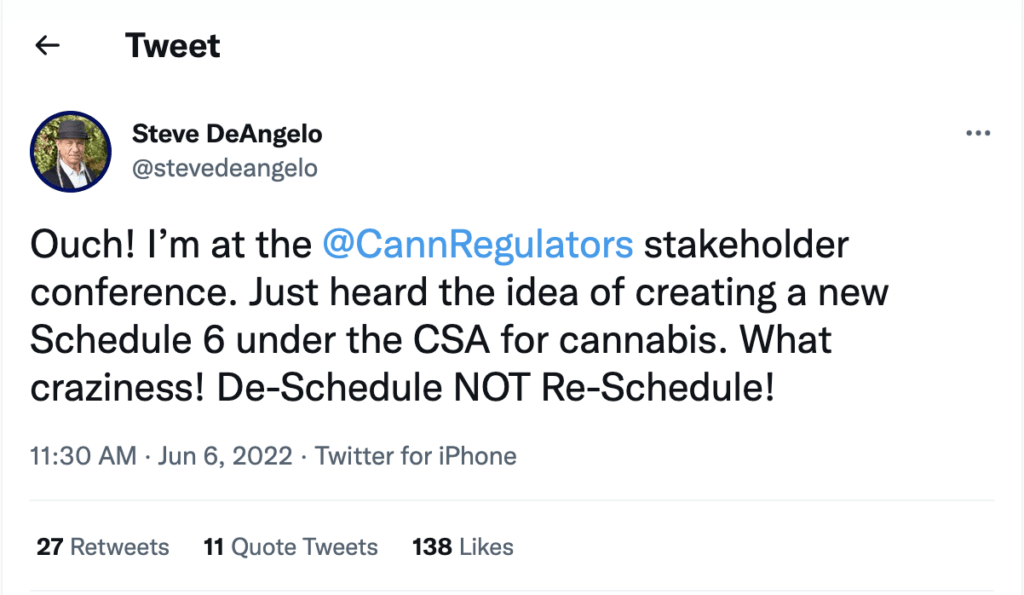
After two days of panels, did anything new come through these discussions, or were any accomplishments achieved?
KK: I think there’s a growing recognition that addressing social equity solely through preferential licensing and business ownership for the few isn’t enough and that the licensing agencies and regulators that execute social equity policies have a very limited (and often underfunded) arsenal to comprehensively redress the harm caused by federal, state and local governments prosecuting the war on drugs. In my remarks, I said it was time for us to start discussing additional forms of targeted reparation and had a number of regulators approach me afterward to continue the discussion. Candidly, I expected my remarks to fall on deaf ears. They didn’t. That was very encouraging.
MC: There was definite progress. At the end of the day, these cannabis regulators are working hard to try to get this right. But in such a new area, and with so many competing perspectives and voices, their job isn’t easy. We were heartened to see the level of engagement from regulators on these points, including follow-ups to get more information on some of the pain points we identified for small and equity businesses in the industry.
It was definitely rewarding to provide NCIA and our members’ perspectives in a forum like this, and we’re looking forward to continuing to further strengthen NCIA’s relationship with CANNRA and regulators around the country.
Member Blog: What Growers Should Know About Hop Latent Viroid

by Angel Fernandez, María Zuccarelli, and María de Catarina, MyFloraDNA
For many years, growers and breeders have speculated why “dud plants” are seen across different cannabis crops.
It is a fact that cannabis has faced many viral infections. Due to viruses and viroids, some varieties mutated into genetic changes over time, altering the evolution of the plant.
But… how can we detect Hop Latent Viroid (HLV)?
Hop Latent Viroid (commonly known as Dudding Disease) is a single-stranded, circular infectious RNA. It is not a virus. Let us explain the difference:

Viroids only replicate in plants. Also, viruses are more complex than viroids. Viroids are compounded by only RNA, while viruses are composed of a protein capsule enveloping their genetic material.
Viruses infect new hosts only once they enter a host and replicate on it. Viroids are transmitted through direct contact of a healthy plant with an infected one. Also, can be transmitted by contaminated tools and instruments (gloves, scissors, tweezers, even human hands).
Talking about HLV, we must remember that this viroid is latent, so there are many asymptomatic transmissions. It can spread without symptoms, and you will only realize it when it is too late.
HLV Symptoms:
HLV is a silent viroid, meaning that this viroid may or may not show early visual clues from its presence. Some physical symptoms in cannabis plants are:
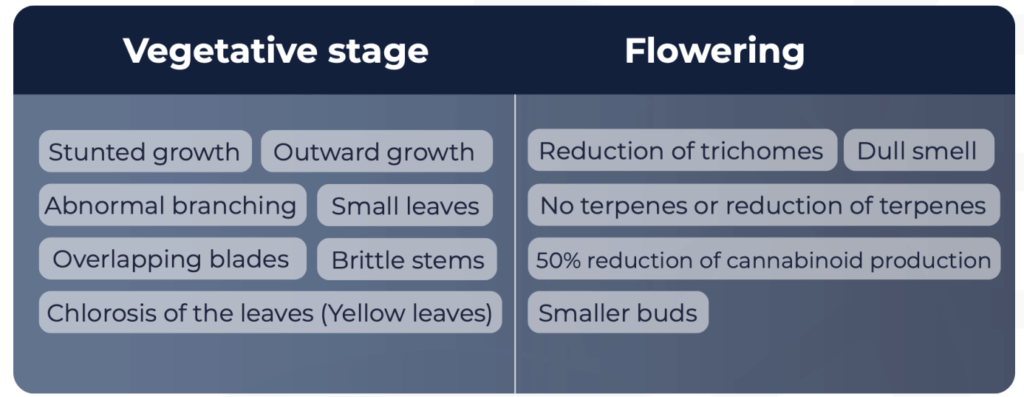
What about transmission?
This issue is important, so please take note. If you have any doubts about an infection of Hop Latent Viroid in your garden, TREAT EVERYTHING AS IF IT IS INFECTED. Download here our guide on how to treat infected material.
HLV and other viroids in your garden or greenhouse can spread quickly from infected to healthy plants. The main transmission causes are:
- Infected equipment: sterilize the equipment before working on new plants to reduce the possibility of contamination.
- Clones: before cutting, we recommend doing a complete pathogen test, to avoid infected clones.
- Seeds: this is currently under research, but HLV has an 8% chance of being present in the seeds of an infected mother plant.
- Human touch: cultivation managers and staff have to sterilize their hands and gloves before jumping from one plant to another. A simple touch is enough to transmit HLV.
- Bugs and pests: bugs and pests are always present, and their bites may transmit HLV, spreading the pathogen through your entire garden in a blink of an eye.
How can you prevent HLV?
Here are some essential tips:
- Keep your equipment clean. You can read more about how to sterilize your tools on our Instagram profile.
- Make sure you have pests under control
- Tissue culture: HLV can travel through the plant’s vascular system and may be left behind in older tissues as plants develop. It can outgrow the problem by producing clones from the infected plant. The more cuttings a grower roots, the higher the chances of selecting a clean one.
- Pay special attention when visits come by: HLV may come in a visitor’s hand, glove, or even shoes!
- When a plant or leaf enters, please do not accept it unless it has a negative DNA HLV test. It is the only way you can be sure it is not a threat to your garden.
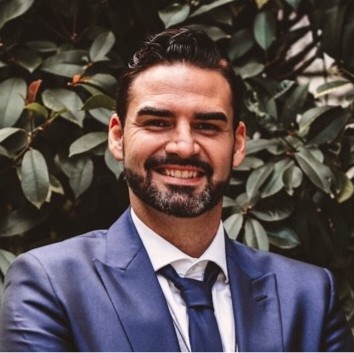 Who asks if you think HLV may be in your garden?
Who asks if you think HLV may be in your garden?
Thank you for reading! We hope you find this information useful. In case of any doubts, do not hesitate to ask us regarding any related topic and download our Complete HLV Guide here. We highly recommend you consult with DNA Laboratory. They will guide you through the process, test your plants, and let you know if they are infected with HLV or not.
Angel Fernandez, CEO & Co-Founder at MyFloraDNA. “It is time to fill in the gap between DNA Sciences and Agriculture. MyFloraDNA is willing to show the huge opportunities that exist for modern genetics in agriculture. Now, it is time for another agricultural revolution”
Co-author: María Zuccarelli, CMO at MyFloraDNA.
Editor: María de Catarina, PR Intern at MyFloraDNA.
About MyFloraDNA: We are a genomic laboratory based in Woodland California, delivering modern genomics for the Cannabis Industry.
Our services include Trait detection (cannabinoid profile and sex/gender ID), Pathogen Detection, and Genetic Validation Services. We offer breakthrough solutions using the inner power of your plants.
Member Blog: Trials and Tribulations – Compliance for Banking

by Nicole Perry, DartBank
There are not a lot of financial institutions out there that support cannabis, so finding the right one is important. What is also important is to understand the ‘why’ behind what they are asking. Opening a cannabis bank account is not as easy as opening a traditional business bank account. With cannabis being federally illegal, banks, and credit unions must adhere to the rules and regulations set forth by our regulators, also tying in the respective state that the cannabis business is operating in.
An initial phone call is often set up for the financial institution to learn more about the cannabis business, its owners, and signers. Knowing when the business will be operational and what their big picture looks like is fundamentally important. Questions could be asked about ownership, location, growth, licenses, and compliance. Some products and services are not fully available to the cannabis industry, because other players have not fully opted in (i.e., merchant processing and debit/credit cards). This makes the financial institution banking cannabis able to create a product suite that they feel comfortable with from a risk and compliance standpoint. Pricing out cannabis bank accounts is also something that differs from the traditional businesses being banked.
Again, not every financial institution will support cannabis, and that is because it is expensive. It is expensive because those that support the industry have had to seek guidance from consultants, their respective regulator, their state, their local cannabis groups and associations and their board of directors. The initial onboarding of a cannabis customer, after pricing is accepted, takes longer as well. Background and credit checks, as well as risk reviews need to be completed at most financial institutions, along with an initial onsite audit visit.
It is widely understood that cannabis businesses must go through an inspection with their operating state before they are licensed, however, financial institutions are still required to make sure they know what they are working with. Most financial institutions work closely with their compliance/BSA teams to develop risk profiles so that if questions are asked of them during an audit, they can answer to the best of their knowledge the transactions that are occurring and then prove that we understand what the cannabis businesses are using their accounts for. Many financial institutions have implemented the use of compliance software that allows their cannabis departments to review transactions, seed-to-sale monitoring, monitor licensing, insurance, onsite visits, and financial changes. METRC and Bio Track are the two main seed-to-sale tracking systems used throughout the United States. Most states have adopted using one or the other and few have implemented their own manual tracking.
The seed-to-sale system your financial institution chooses to work with can integrate with your respective state’s seed-to-sale tracking system for financial institutions to monitor account transactions and seed-to-sale flow. It is common to have your financial institution reach out to you once you have been onboarded to integrate your API key (QR code that houses your cannabis licenses) into their respective compliance software to initialize the tracking component. Directly after this, the designated person at the cannabis business or CPA (to be determined by the cannabis business) will be asked to upload your financials into the compliance software monthly for tracking purposes. These systems correlate with most POS systems as well as QuickBooks for a seamless flow. Financial Institutions are often asked by cannabis businesses if this is something they can do in-house or if they can utilize an outside CPA firm to help. The answer is yes to both. It takes minimal time each month to upload your financials so doing it yourself is certainly feasible, however, there are many CPA firms out there who will do it for you, along with making sure your numbers make sense and your taxes are accounted for. Not to mention, the annual CPA attestation as well.
Financial institutions are not asking you to do this to make your life difficult. It is simply because this is a new industry, one that is federally illegal at that, and verifying information to better understand how the industry works only helps to normalize it. It is also common for your financial institution to ask for invoices to accompany transactions such as wires, ACH, bill pay, checks, cash deposits, etc. We do this because auditors also ask us if we can, in fact, verify we know what this transaction was for and to whom the funds went. It also helps with fraud surveillance. Most financial institutions have experts in fraud or compliance who can help deter this from happening to you and your business.
We have come a long way since inception and have learned a lot over the years. What is important to know is we are all a team. The cannabis business and the financial institution are working together to understand how they both complement each other. Together we are building the cannabis industry, so that one day, when it is stabilized and normalized, we can take that with us for the next big thing. Every industry out there was new at one point and had to go through the same trials and tribulations, and while most of us cannot remember or have never been a part of the ‘build out,’ it did happen at some point. When your financial institution asks you for something related to transactions or business, please understand that it is for the better of the industry.
We can work together to normalize and strengthen this industry. All the steps we are taking are learning opportunities. I believe everyone can say at one point they did not know how to do something, but through training, education, and a road map, we were able to develop a routine so that as we grew at understanding something we had not understood before, it became normal.
 Nicole Perry has been with Dart Bank since 2016 as the Office Manager and most recently VP/Senior Treasury Management Officer. She brings with her 20 years of financial services experience. Prior to joining Dart Bank, she worked for various financial institutions holding many different roles, specializing in business banking.
Nicole Perry has been with Dart Bank since 2016 as the Office Manager and most recently VP/Senior Treasury Management Officer. She brings with her 20 years of financial services experience. Prior to joining Dart Bank, she worked for various financial institutions holding many different roles, specializing in business banking.
Nicole is an alumna of the Lansing Chamber of Commerce’s Lansing Leadership 2018 class and is part of the Perry School of Banking class of 2020. She received her Bachelor of Arts in Business Management with an emphasis in Human Resources from Davenport University and attended Central Michigan University for her Master of Science degree. In her spare time, Nicole enjoys attending Michigan State University football and basketball games and spending time with her family and friends at the lake.
Member Blog: Stellar Customer Service, Transparency, & Education Drive Cannabis Success

by Gary Paulin, VP of Sales and Client Services at Lightning Labels
With expansive product choices, it’s no longer enough to rely solely on product quality and availability. Today’s maturing cannabis marketplace requires differentiation to resonate and succeed.
Three pillars of that differentiation are stellar customer service, total transparency, and excellent education. At the core of each, sincerity and truth must predominate. In this age of “fake news,” anything that doesn’t seem trustworthy and true likely will backfire on the company sooner or later.
It only takes one unsubstantiated quality control or product claim to hit the social media lie detector, then potentially go viral. At the very least, one consumer badmouthing your company via word-of-mouth and/or digital messaging will harm your reviews and ratings. In most cases, the damage will be undetectable until it reaches a level where revenues and reputation are noticeably impacted.
Following are four basics of stellar customer service, transparency, and education:
-
Interact authentically. Scripts and canned phrases instinctively don’t resonate with most consumers. One obvious example is the “I’m so sorry you’re having a problem” response. How likely is it that the person is really sorry and not just parroting something they’ve been told to repeat time and time again? Instead, communicate in a real way by tuning into what the existing or prospective customer is trying to address.
For example, when someone complains about lengthy waits to receive live phone support (including disconnects while waiting), it’s okay to say something like, “I get it. We’ve been having challenges. Now that we’re on the phone together, let’s address your needs right away. And, please give me your phone number, just in case this call drops. I’ll call you right back.”
-
Offer multichannel communications preferences. Some people want live phone support, not a digital option. Chat bots can be extraordinarily frustrating unless the programming and ability is advanced. Ditto for “live chat.” As much as possible, make it easy and meet everyone’s preferences. Email, live phone support, texting, website knowledge center, and digital chat should all be offered to meet the customer in a way that works best.
-
Offer total and transparent education. Knowledge centers (and associated forums) and FAQs can be excellent tools to help provide priority information, but they’re only one piece of the puzzle. Consumer questions and concerns can cover anything. There should be an easy way to find more information through the above-referenced channels as needed. Product labels can provide easy access to a variety of information, starting with label content and extending to either Augmented Reality or QR digital gateways for more in-depth education. Those digital gateways should contain valuable information, along with easily found follow-up calling, emailing, live chat, and additional educational options (including possibly Knowledge Center, FAQs, and keyword-search forums/articles, et al).
“Full disclosure” should be at the core of all things educational, both in information repositories and customer service support. For example, CBD can make some people cranky and anxious. Full disclosure must override the desire to sell. By fully informing a consumer of risks as well as rewards, the experience is much more likely to result in high marks for the company.
Conversely, incomplete or inaccurate information provided by salespeople motivated only by making sales will backfire when less than optimum outcomes occur. In contrast, a salesperson willing and able to fully educate will help build long-term customer relationships with the company.
-
Hire motivated, attentive, smart people. No matter what policies and training are in place, ultimately companies need to focus on hiring the best candidates — those dedicated to top-notch customer service, truthtelling, and education. Workforce shortages are not a valid reason to abandon these core values in the name of expedient hiring. Be committed to employee wants and needs, and be prepared to follow through. Offer generous wages, but beware of those who seem overly money motivated and demanding. They likely will be gone as soon as the next “shiny toy” opportunity comes along.
There are companies that have weathered supply chain and workforce shortage issues — and even inflationary pressures — well. One that comes to mind is Costco. Unlike many retailers during the pandemic, their quality of service has remained high. Product availability and selection have been maintained. Prices, although subject to some upward movement, don’t seem to have risen as much as most retailers.
Clearly, Costco found solutions instead of blaming challenging conditions and using those as an excuse for failure. Follow this example. Find ways to do more with less, get creative about becoming more efficient, and plan ahead so that emergent problems don’t become overly taxing.
Cannabis companies that excel in being trusted, liked, and respected will outperform their competitors willing to live with mediocrity.
 Gary Paulin is VP of Sales and Client Services at Lightning Labels, a Denver-based custom label printer that uses state-of-the-art printing technology to provide affordable, full-color custom labels and custom stickers of all shapes and sizes. Contact: sales@lightninglabels.com; 800.544.6323 or 303.481.2304.
Gary Paulin is VP of Sales and Client Services at Lightning Labels, a Denver-based custom label printer that uses state-of-the-art printing technology to provide affordable, full-color custom labels and custom stickers of all shapes and sizes. Contact: sales@lightninglabels.com; 800.544.6323 or 303.481.2304.
Committee Blog: Cannabis Lounges – Coming to a City Near You?

 By Jodi Green, Miller Nash LLP; Shay Gilmore, The Law Office of Shay Aaron Gilmore
By Jodi Green, Miller Nash LLP; Shay Gilmore, The Law Office of Shay Aaron Gilmore
Members of NCIA’s Risk Management and Insurance Committee
Although the concept of state-legal cannabis has been around in some shape or form since 1996, cannabis remains illegal to consume in most public places. In other words, legal cannabis consumption remains relegated to back alleys, derailing efforts to “normalize” cannabis use. Tourists visiting popular cities where weed is legal are caught in the unenviable Catch-22 of being able to purchase, but not publically consume, the product. And those who attempt to use cannabis in public still face criminal penalties in some states, with minorities three times more likely to be targeted for arrest, perpetuating racial disparities at a tremendous social cost.
Enter the cannabis lounge. Cannabis lounges — also known as “consumption lounges,” cannabis cafes, or some variation on that theme — are in simplest terms the cannabis equivalent of a bar or restaurant. Depending on state and local regulations, lounges offer users the chance to congregate in a public place and smoke a joint, try out a $500 gravity bong, or sip on a cannabis drink. With any luck, consumers may enjoy their cannabis with a snack or dinner, but mixing with alcohol is typically not allowed.
As with any “new” risks, some cities, states, and insurers are… concerned. Despite some obvious tax and social benefits, detractors cite a host of reasons to prevent lounges from coming to a city near you, including at the forefront: fears of public nuisance (odors, theft, and disruption) and overconsumption — especially because most states insulate cannabis cafes from liability for harm caused by obviously intoxicated or underage users, unlike dram shop laws for alcohol.
As another NCIA member recently pointed out, even in states that do allow cannabis cafes, regulatory bodies continue to struggle with how to shape the laws and regulations governing lounges to afford adequate consumer protection while allowing businesses to thrive. Moreover, without a better understanding of the regulatory landscape, some insurers — whose business model hinges on the ability to accurately price a risk — may be unwilling to play in this new cannabis lounge market.
A Sampling of State Approaches to Cannabis Lounges
Alaska led the country in 2019 in licensing on-site consumption. A handful of states and localities have followed Alaska’s guide, and more are anticipated to join this year, including Michigan and New York. We compare a few regulatory schemes below and also consider the impact of dram shop legislation on risks faced by the industry.
California
California, governed on the state level by the Medicinal and Adult Use Cannabis Regulation and Safety Act, delegates to localities the right to open consumption lounges. Put simply, cities have to affirmatively “opt in” to allow lounges. With a few contingencies — including that patrons must be 21 or older and no alcohol or tobacco can be sold on premises — “a local jurisdiction may allow for the smoking, vaporizing, and ingesting of cannabis or cannabis products on the premises of a” licensed retailer. See BPC § 26200(g).
To date, only a few localities have opted in to allow cannabis lounges, including San Francisco, Oakland, and Palm Springs. West Hollywood, in efforts to create an epicenter for canna-tourism, plans to allow up to 16 lounges within its jurisdiction. Because state law provides little regulatory guidance for lounges, localities generally provide more specific guidance. As an example, West Hollywood’s local municipal code requires security guards on site, as well as within a two-block radius surrounding the business during operation, and allows the sale of cannabis to an individual “in an amount reasonable for onsite consumption.” West Hollywood Municipal Code §5.70.041. Only one lounge is currently open in West Hollywood, the Artist Tree’s Studio Cannabis Lounge, which offers not only lounge access but cannabis yoga, live music, and comedy shows, along with a revolving selection of local art. The Woods, another West Hollywood dispensary with a soon-to-open courtyard lounge space, is also slated to open in 2022.
Although California law significantly limits third-party liability for alcohol-related accidents, it does not afford cannabis owners the same protection. For example, California Civil Code §1714 explicitly states that furnishing alcohol “is not the proximate cause of injuries resulting from intoxication,” which has essentially absolved bars, restaurants, party hosts, and most others of potential liability for selling or furnishing alcohol to customers and guests with an exception for liability arising from the furnishing of alcohol to an “obviously intoxicated minor.” See California Business & Professions Code § 25602.1. Without similar protections for cannabis lounges, injured parties could attempt to sue under a negligence theory if a business or employee serves an intoxicated patron who causes harm.
Colorado
As of January 1, 2020, local jurisdictions in Colorado can opt-in to the state’s cannabis hospitality business license regime (Colo. Rev. Stat. § 44-10-609), and as of March of 2022, the City of Denver has approved cannabis hospitality businesses for operation. Denver operators include the first social equity applicant in Denver approved for a hospitality license, the Tetra Lounge, although from its website Tetra Lounge’s website describes itself as “a private lounge,” requiring a monthly or annual membership fee and a liability waiver to gain access.
As to dram shop liability, although Colorado law authorizes damages against a licensee for willfully and knowingly selling or serving alcoholic beverages to a visibly intoxicated person, the Colorado Legislature caps liability at $150,000 (Colo. Rev. Stat. § 12-47-801 (3)(II)(c)). This damages cap improves (i.e., reduces) the ISO hazard grade, resulting in the improvement of insurance options available for liquor liability. The legislature has not adopted the same or a similar damages cap on liability for cannabis consumption establishments.
Nevada
In June 2021, Nevada’s Governor signed Assembly Bill 341 into law, authorizing the Nevada Cannabis Compliance Board (“CCB”) to license and regulate consumption lounges across the state, subject always to local approval. The State plans to issue up to 65 lounge licenses (40-45 for lounges attached to existing dispensaries, 20 for independent lounges) with 10 reserved for social equity applicants.
Most recently, on June 28, 2022, the CCB voted to unanimously approve a host of regulations for cannabis consumption lounges. Nevada’s extremely detailed state regulations prohibit the sale of “single use cannabis products” with more than 3.5 grams of “usable cannabis” and 10 mg of THC for edibles; prohibit the removal of any cannabis products from a lounge; require a mitigation plan for impaired driving and detailed employee training for overconsumption; and require consumer education and warnings to customers, among other things. As with other states, Nevada allows local jurisdictions to prohibit consumption lounges and to implement more stringent regulations than state law.
Unlike other states, however, Nevada law carves out protections for cannabis lounge operators just as it does for alcohol. Nevada law already protects businesses that serve or sell alcoholic beverages from injuries inflicted by an intoxicated person. And while any person who knowingly furnishes an alcoholic beverage to any person under 21 years of age is guilty of a misdemeanor, the law provides only for criminal penalties, not civil liability. The Nevada Supreme Court has repeatedly refused to impose responsibility on vendors selling alcohol absent a legislative provision. See Snyder v. Viani, 885 P.2d 610 (Nev. 1994) (holding consumption is the proximate cause of alcohol-related injuries and dismissing the negligence claim against a tavern owner for alcohol service). The same rules will apply to cannabis operators.
Illinois
Over two years after full legalization of adult-use commercial cannabis in Illinois, cannabis lounges in Illinois are still relatively rare, with the first Chicago-area marijuana consumption lounge opening on April 20, 2022. Like other states, the State of Illinois does not directly license lounges, but it allows local governments to opt in.
Illinois creates a cause of action against sellers for injury by an intoxicated person. § 235 Ill. Comp. Stat. 5/6-21. The standards for liability under the Illinois dram shop law include: (1) sale of alcohol to any person who, while intoxicated, causes injury, and (2) any person owning, renting, leasing, or permitting the occupation of any building or premises with knowledge that alcoholic liquors are to be sold therein, severally or jointly, along with the person selling or giving liquor. In Illinois, the Dram Shop Statute provides the exclusive remedy for alcohol related injuries. See Charles v. Seigfreid, 65 NE.2d. 154 (Ill. 1995). The Statute also provides stringent limitations on recovery of damages. There is no equivalent in Illinois for cannabis entities.
The Takeaway for Business Entities and Insurance Providers
As with cannabis law generally, lounge operators face a patchwork of state and local regulations that vary tremendously by jurisdiction. In most places, cannabis lounge owners are not protected by dram shop/gram shop laws that otherwise insulate bars and restaurants from liability for overconsumption. This means that companies must be vigilant in protecting themselves from liability by instituting compliance and risk-management procedures.
In some instances, such as California’s West Hollywood, which has far fewer safeguards and guidelines than Nevada, operators are largely left to their own devices in implementing adequate risk transfer and risk management, compliance, employee training, and consumer education to limit risk of liability. While the West Hollywood municipal code requires lounges to limit cannabis sales of cannabis “in an amount reasonable for onsite consumption,” the “reasonableness” standard is rife with ambiguity and could lead to disputes regarding liability and assumption of risk if a patron overconsumes.
Evaluating and preventing overconsumption and intoxication will be particularly difficult for cannabis when: patrons have varying experience levels with cannabis; products can be sold in more than a single serving, and no specific consumer education is required. Thus, even in locations that have more stringent regulatory oversight, companies would be wise to consult with experienced counsel and consultants to avoid or limit potential risks associated with regulatory uncertainty, civil liability, and government penalties for non-compliance.
This brings us full circle to the question of insurance. Even in the states that allow consumption lounges, very few insurance companies provide coverage for on-site consumption (although some do). If an exclusion prohibits coverage, the company may not have coverage for important and sometimes catastrophic events, such as property damage by fire, theft/robbery, cyber events, sexual harassment or discrimination claims by employees or others, and bodily injuries to, or caused by, patrons (on and off premises).
Most existing property, general liability, products liability, and other insurance policies — including those written for the cannabis industry — expressly exclude coverage for on-site consumption or bodily injury caused by intoxication. In fact, some existing cannabis insurance companies include a “health hazard” exclusion in their policies, which exclude coverage for any bodily injury arising in any way from the use of cannabis, including any health injury. Cannabis insurance policies may also exclude coverage for intentional or illegal acts, which some insurers may try to apply to any claim involving cannabis on the basis that the sale of cannabis violates federal law (the Controlled Substances Act), even if it is state legal.
For current licensees that are planning to open an attached or adjacent consumption space, current insurance policies may not cover injuries arising in the lounge space. Further, any failure to identify a change in business type could prompt an insurance carrier to deny coverage for subsequent claims based on a theory of misrepresentation.
In closing, cannabis owners should attempt to negotiate separate and/or broader coverage that carves out coverage for their cannabis-related activities, including on premise consumption, with their current insurer or seek to obtain coverage from a different carrier. Experienced insurance coverage counsel can assist with identifying reputable insurance brokers and negotiating policies that provide such coverage. Because of the limited options, companies would be wise to begin the process of identifying experienced insurance coverage advisors at the beginning of their licensing journey.
Member Blog: As Professionals in the Cannabis Industry, It’s Our Responsibility to Unmask the 4 Big Lies

By Charlena Berry, Cannabis Business Growth
The following is adapted from Breaking the Stigma.
The vast majority of U.S. adults support the legalization of cannabis, with 60 percent supporting legalization for medical and adult use, and 31 percent supporting medical use only. Only 8 percent say it should not be legal for use by adults in any scenario. These numbers are promising for those of us in the industry, but behind the numbers, many stigmas still exist.
Breaking the stigma against cannabis is the responsibility of each and every individual currently working in the cannabis industry. In particular, for those of us working in retail, we are on the front lines of changing the criminal and negative perceptions associated with cannabis.
As front-line workers, it is important to understand how the stigma against cannabis came about and how it has harmed not just the cannabis industry and cannabis users, but our entire country. We’ve all been lied to. These Big Lies have shaped our beliefs about race, cannabis, and addiction, and it’s time to unmask these Big Lies for what they are: lies.
#1: Black Men Are Dangerous
The lie that Black men are inherently dangerous extends far, far back into our country’s history, but we’re going to start in the 1930s, with a man named Harry J. Anslinger. Anslinger became the commissioner of the Federal Bureau of Narcotics in 1930.
Anslinger initially spent most of his time chasing down bootleggers. When Prohibition ended in 1933, he suddenly found himself out of a job. For the Federal Bureau of Narcotics to continue to have purpose — and receive the funding that paid his salary — Anslinger had to find a new bogeyman to prosecute.
He chose marijuana, a term that itself has racist roots and was a way to otherize cannabis as a “Mexican drug.” At this time, cannabis was not regulated in any way in the United States, so he first had to make it illegal. In order to do that, he needed people to fear it. He figured, why not link it to something people already fear: Black people — particularly Black men.
And so, the propaganda began. Anslinger sparked a national anti-cannabis movement by tying cannabis usage to the Black community and other marginalized groups.
Obviously, Anslinger didn’t invent racism, but his propaganda propagated and amplified it. In short, Anslinger used the lie that Black men are dangerous to help make cannabis illegal, and then he weaponized cannabis against minority communities.
To this day, people of color are disproportionately impacted by the war on drugs. In fact, though Black and white people use cannabis at similar rates, a Black person is 3.64 times more likely to be arrested for possession. And, as industry professionals, we need to understand the racist roots behind the stigma of cannabis and do our part to elevate those groups disproportionately and unfairly impacted by the war on drugs.
#2: Cannabis Is Dangerous
Using fear of Black men, Anslinger convinced people that cannabis was dangerous. The idea that cannabis makes people dangerous is ludicrous to me. I grew up during the war on drugs, and I bought into many of the lies. I truly believed cannabis was bad, but never once did I think of cannabis users as dangerous.
As a child, I spent time around both alcoholics and cannabis users, and the difference was clear to me. Drunk people were violent, abusive, and dangerous. High people were safe, normal, and most importantly not violent.
However, in the drug education I received, I learned that all drugs are fundamentally bad, with no differentiation. Cannabis, meth, heroin, LSD, cocaine — they were all grouped together. And even when people acknowledged that cannabis was less harmful and addictive than harder drugs, they emphasized that it was still incredibly dangerous because it was a “gateway drug.”
Today, despite all the evidence that cannabis is safe for most people, the lie persists. Cannabis is classified as a Schedule I drug, meaning it has “no currently accepted medical use and a high potential for abuse.” Other Schedule I drugs include heroin and meth.
As a country, it’s long past time that we focused our attention on true dangers. As a cannabis retailer, it’s important to recognize that even though you know cannabis is not dangerous, your customers might not.
#3: Opioids Are Safe
Because of the lie that cannabis is dangerous, it was not normalized (or legal) as a method of pain management. There was a need for pain management, though, and so in 1996, Purdue Pharma, under the direction of the Sackler family, developed and patented OxyContin.
It was hailed as a miracle drug that took all the pain away, as if by magic. Magic often comes at a cost, though, and in this case, the cost was hundreds of thousands of American lives — more than five hundred thousand, to be specific.
Within a few years, evidence emerged that the drug was addictive and led to overdose deaths. While we were all being told that cannabis was the gateway drug, Purdue Pharma was flooding our country with the real gateway drug—opioids. They funded research studies that supported the use of OxyContin, and Richard Sackler put intense pressure on sales managers to sell more.
This Big Lie has harmed hundreds of thousands of Americans. Opioids destroy lives, and the ripples extend beyond the addict alone. An entire generation of children will be shaped by addiction and the absence of their parents.
You may not be personally connected to the Opioid Endemic, but as a cannabis retailer, you are in the business of pain management. By understanding this Big Lie and providing people with an alternative to addictive opioids, you could literally save lives.
#4: Addiction Is the Addict’s Fault
I understand the impulse to blame addiction on the addict. An addict’s struggles with addiction can be enough to tear their loved ones apart inside. You want to scream, “Why can’t you just quit?” But blaming addiction on the addict makes as much sense as blaming someone for having cancer, asthma, or migraines.
Who is responsible for addiction, then? The people who caused the Opioid Endemic, people like the Sackler family. As Patrick Radden Keefe puts it in Empire of Pain, “Prior to the introduction of OxyContin, America did not have an opioid crisis. After the introduction of OxyContin, it did.”
So, if you want to blame someone for addiction, blame the Sacklers. Blame Big Pharma. Blame the people who knew this drug was addictive but lied to us, told us it was safe, and pumped it into our communities.
Every single person I know who got addicted received their first pill or hit from a trusted source. This is how the Opioid Epidemic started. It didn’t start with irresponsible drug dealers on the street. It started between patients and doctors. Opioids moved through our world via trusted sources.
Cannabis and opioids are very different drugs. Cannabis is far safer than many people realize. Due to the nature of cannabis, I do not believe cannabis retailers will be creating addicts the way Purdue Pharma did, but it’s still important to understand this Big Lie because some of your customers may have struggled with addiction and need compassion from you.
The Consequences of These Lies
These Big Lies are all connected. Without racism, cannabis wouldn’t have been stigmatized. Without the stigma against cannabis, we would have had a nonaddictive alternative to opioids. Without the lies that opioids are safe and that addicts are to blame for addiction, hundreds of thousands more people would still be alive today.
When it comes to breaking the stigma, you are on the front lines. In knowing the truth about where the stigma came from and why it’s so harmful, you can begin to change it.
One customer at a time, you can begin to undo the Big Lies and share the reality of cannabis.
 For more advice on how to undo the Big Lies and share the Big Truths of cannabis, you can find Breaking the Stigma on Amazon.
For more advice on how to undo the Big Lies and share the Big Truths of cannabis, you can find Breaking the Stigma on Amazon.
Charlena Berry is the author of Breaking the Stigma: Racism, Lies, the Opioid Endemic, and Inviting Grandma to the Dispensary. In this book, she exposes lies that created the stigmas associated with cannabis, and how these stigmas must be addressed to see continued growth in the marketplace. She then outlines a framework that provides key strategies for retailers to implement to improve the customer experience and increase profitability.
Writing from her experiences in the industry, Charlena is a global cannabis business executive and the founder of Cannabis Business Growth, a premier cannabis business consulting firm. Prior to that, she spent more than a decade in Supply Chain and Retail Operations for Fortune 500 companies like Whirlpool and Office Depot/Office Max. She also serves as the Chief Operating Officer for The Cake House, a chain of dispensaries in Southern California.
Member Blog: Another Day, Another Lawsuit – Cannabis Companies Are Finding Out the Hard Way They Need EPLI

By Eric Rahn, Managing Director, S2S Insurance Specialists
Harassment, wrongful termination, race, gender and age discrimination, and hostile work environments are wreaking havoc on the cannabis industry, resulting in an upswing of recent lawsuits that are costing companies hundreds of thousands of dollars and causing harm to the workforce and brand damage that is – oftentimes – beyond repair.
With the average claim costing small-to-mid-sized cannabis companies between $100,000 and $500,000, there needs to be more of a focus on creating a workplace environment free from harassment, discrimination, and bias. Furthermore, cannabis businesses need to be proactive in having the proper insurance policies in place.
You may make a mistake and be exposed to liability. You may do everything right, yet still be sued. Employer’s Protection Liability Insurance (EPLI) is key to protecting your business from employee-related risks and detrimental lawsuits.
What is EPLI and What Does it Cover?
EPLI is a type of management liability insurance that helps safeguard businesses against employee claims alleging inappropriate or unfair treatment. Former, current, and potential employees who believe the company has violated their legal rights can file lawsuits for a variety of reasons. The most frequent types of claims covered under EPLI include sexual harassment, discrimination, and wrongful termination/retaliation. However, EPLI can also cover a broader array of employment issues, such as breach of an employment contract, negligent evaluation, failure to employ or promote, wrongful discipline, deprivation of a career opportunity, wrongful infliction of emotional distress, defamation, invasion of privacy and mismanagement of employee benefit plans.
While policies vary, EPLI generally covers settlement, judgment, legal costs, fines and penalties. EPLI also protects a company’s directors and officers, management, and other employees from being held personally liable in a lawsuit.
Common Scenarios Resulting in Recent Lawsuits:
Sexual Harassment. According to the 2020 report, Prospects and Pitfalls: Confronting Sexual Harassment in the Legal Cannabis Industry, “sexual discrimination and harassment plague the legal cannabis industry. Moreover, the industry’s past illicit nature threatens to perpetuate employer misconduct.”
Over the past few years, there has been a surge in sexual harassment claims in the cannabis industry. One such suit filed by the U.S. Equal Employment Opportunity Commission (EEOC) alleged that a general manager at a medical marijuana dispensary in Maryland engaged in “unwelcome touching,” made “highly offensive sexual comments to and about staff and customers,” and “showed an employee a nude picture on his phone.” Although employees complained for months about the harassment, the company did not investigate until after it learned a complaint had been filed with the EEOC. The courts ruled in favor of the plaintiff, and the dispensary and its parent company were remanded to pay $175,000 to settle the suit.
The cannabis industry is plagued by many of the same gender issues as other mainstream industries. In a study conducted by WeedMaps, 53% of women in the cannabis industry have experienced workplace harassment with 46% reported feeling sexually harassed. However, it’s not just women and lower-level employees making claims. Last February, a large publicly traded California cannabis flower distributor came under fire when its former Chief Revenue Officer – a male – accused the company of fostering a culture of sexual harassment and coverup. In the official complaint, the executive said he was subject “to severe and pervasive sexual harassment, both hostile work environment and quid pro quo, as a result of unwanted sexual advances and other discriminatory conduct.” The pending court case seeks an unspecified amount of damages from the company and also names three of its related companies liable.
Discrimination. Title VII is the Federal Civil Rights Law that prohibits employment discrimination on the basis of race, color, gender, national origin, and religion. For women, the cannabis industry remains a harassment-filled boys club. The latest in the battle to fight misogyny in the cannabis growing and retail industry, is a lawsuit filed by two workers at cannabis-growing companies in California who claim they were “wrongly fired after protesting workplace conditions and gender bias, including prohibitions on women working in growing rooms and pregnant women working at the companies.” The complaint also alleges that the companies conducted “a sham investigation of their complaints of bias, to further create pretense for firing them.” The plaintiffs are seeking compensatory and punitive damages, as well as other penalties against the companies.
Wrongful Termination/Retaliation. According to the EEOC, this is the most common claim brought against employers. The latest case to make headlines was filed in June 2022 by a former employee of a Chicago-based health center who claims she was fired under the pretense that she had bullied a coworker, but in reality she was terminated because she had reported her supervisor’s unwelcome behavior. In the suit, she alleges “violations of Title VII of the Civil Rights Act of 1964 and the Illinois Human Rights Act, and asked the court for damages for emotional distress, humiliation and her loss of employment, as well as punitive damages.”
EPLI – Is it Worth It? Critical Points to Consider:
Navigating employee-related issues can be tricky business. Cannabis companies that land in legal hot water are often more focused on boosting profits and growing their business rather than implementing HR policies and ensuring they have the proper insurances in place to protect themselves against legal claims. The dozens of companies over the years that were embroiled in legal litigation and did not have EPLI learned the hard way that they are solely responsible for paying significant defense fees, compensatory and punitive damages, fines and penalties.
When considering an EPLI, it is critical to negotiate policy limits, selection of counsel and defense limits, when you are first obtaining EPLI insurance or when you are renewing your policy. A qualified cannabis insurance broker can walk you through all the options and guide you on the policy that best meets your needs and budget.
While EPLI can be offered as a stand-alone policy, it is typically more affordable to combine EPLI with an existing policy, such as Directors & Officers Liability (D&O). Certain policies automatically include sexual harassment, but others do not, or you may be required to get a special endorsement for sexual harassment. Keep in mind that coverage is specific and EPLI cost is based on the business type, employee numbers and past lawsuits associated with the organization. Your broker should do the leg work for you and present coverage options and cost comparisons, so management can make an informed decision.
In Summary
Prevention is the cornerstone of reducing the risk of employee-related lawsuits. However, even if you develop and enforce a zero-tolerance policy for sexual harassment, discrimination, and other harmful issues, and take immediate and appropriate action when a complaint is made, claims can and will happen.
As you hire more employees, your risk of discrimination and sexual harassment increases. An EPLI policy can help your legal defense and settlement of such claims. In today’s climate, business owners and managers need to be proactive and understand the risk management tools and options available to them to protect their business.
 Eric Rahn, Managing Director of S2S Insurance Specialists, is a highly specialized insurance broker and risk management professional with over 30 years of experience providing C-Suite executives strategies and solutions that protect and safeguard their businesses.
Eric Rahn, Managing Director of S2S Insurance Specialists, is a highly specialized insurance broker and risk management professional with over 30 years of experience providing C-Suite executives strategies and solutions that protect and safeguard their businesses.
Eric has held several executive positions in the maritime and casino/gaming industries, including CEO of the largest privately own casino concessions company operating on cruise ships around the world. He transitioned his knowledge of corporate business practices in highly regulated industries into the burgeoning cannabis space, establishing S2S Insurance Specialists in 2017.
Eric has served on the National Cannabis Industry Association’s (NCIA) Risk Management Insurance Committee since 2016. He is also a national speaker on cannabis insurance and author of NCIA’s Risk Management and Insurance’s “Introduction into Cannabis Insurance.”
Member Blog: PPE and Staff Efficiencies – How Much Do the Quality of Your Disposable Gloves Matter?

by Justine Charneau, Eagle Protect
Single-use nitrile gloves are a required necessity of personal PPE in the cannabis industry. But cheap, ill-fitting gloves can lead to workplace injuries, the most common of which include restricted hand mobility, occupational skin disease, and even reduced dexterity. Aside from promoting hygienic practices, quality gloves can reduce, limit, and even prevent repetitive motion stress injuries that can lead to further disorders and damage to the hands and fingers.
In the cannabis industry, problems such as cuts, pinches, and sprains occur during the intricate trimming actions undertaken during the harvesting and processing stages. These hand-related cultivation stages typically include wet trimming, dry trimming, and pre-harvest trimming. While it’s true that machine-based automated trimming is a faster option, some cannabis cultivation operations prefer hand trimming, which they believe produces more attractive-looking buds and flowers for the final presentation. Speaking strictly from a hygienic perspective, gloves offer and provide two-way protection – helping to prevent cross-contamination from user to product. But quality gloves also protect the wearer from dermal exposure to THC, fertilizing chemicals, and pesticides used in the growing process.
Below is a list of common disorders that the use of cheap disposable gloves can cause.
Occupational Skin Diseases (OSDs)
Occupational skin disease, such as dermatitis, is one of the most common non-trauma related occupational illnesses in the U.S. Just how common are these concerns? Each year, among all industries, approximately 1.8 million American workers suffer from OSD at a total annual cost of up to $2 billion. The hand is the most common site affected by OSD, and protective gloves were found to be the most common primary cause.
Work-Related Musculoskeletal Disorders (WMSDs)
As noted, the cannabis cultivation process includes worker safety considerations to prevent injury from awkward posturing, as well as the excessive, repetitive effort necessary during the trimming process. These repetitive motions can lead to strains of the muscles, tendons, ligaments, and even damage to blood vessels. These undesirable outcomes are all classified as work-related musculoskeletal disorders, or WMSDs. According to industry studies of on-the-job cannabis injuries, occurrences involving the fingers and hands happen with the most frequency. But these maladies aren’t just common in the cannabis industry. In the food industry, the median time away from work for repetitive-motion WMSDs associated with grasping, holding, carrying, or turning objects was 17 days. Considering all industries combined, $90 million in indirect costs (hiring, training, overtime, and administrative costs) are incurred annually in the U.S.
Other Common Hazards of Poor Quality Gloves
When cannabis cultivation operations select cheap disposable gloves over a more quality product, there are six primary hazards of concern. These include glove failures and inconsistencies such as ripping and tearing (a common complaint), glove contamination risk, glove waste/disposal costs, hand injuries, WMSDs, and even reduced productivity. At the heart of the issue is the inclusion of poor quality raw materials and cost-cutting in the manufacturing processes, both reducing the quality of products available to customers.
The primary cause of OSDs, WMSDs, and other common hazards related to the use of poor quality gloves is directly attributable to the raw materials used in the glove manufacturing processes. Simply put, cheap toxins and chemicals in gloves can leave users more susceptible to skin irritations and dermatitis. In many cases, because these raw materials are so poor, the manufacturer must produce thicker gloves to prevent ripping and tearing. But in the majority of cases, the increased thickness won’t make much of a difference, and leads to glove bulkiness and reduced flexibility, causing unnecessary muscle stress and strain among users.
What are the consequences of OSD and WMSD-related injuries? While the specific data isn’t as commonplace within the cannabis industry, workers in the food-handling industry with OSD take much longer periods to return to work than in other glove-wearing professions. It’s estimated that 40% of all worker’s compensation claims involve problems related to exposed skin. As much as 65% of those claims involve hands or upper extremities, with 25% of these workers affected missing up to 10-12 days of work annually. WMSDs account for one-third to one-half of all occupational injuries and illnesses and $15-20 billion in workers’ compensation costs each year.
Cannabis cultivation operations must put more thought and consideration into the gloves they purchase for their workforce. Rather than purchasing decisions based solely on pricing, disposable glove providers should be thoroughly vetted and reviewed. To reduce the risk of skin irritation, good quality gloves that meet the improved standards for low chemical and toxic exposure should be used. Due to the high quality of materials found in the new tech lightweight gloves, the wearer will find that they can be more durable than their thicker counterparts. In the end, the quality of glove you choose to purchase may end up saving you up-front costs but could wind up costing your product budget and staffing needs dearly on the back end.
 Justine Charneau is the head of cannabis industry sales at Eagle Protect, a disposable glove supplier dedicated to the responsible sourcing of quality products that ensure customer safety and impact reduction, ultimately mitigating customers’ risk. Eagle Protect is the only global PPE supplier that is a Certified B Corporation, a designation that a business has met the highest standards of verified performance, accountability, and transparency. She can be reached at justine@eagleprotect.com.
Justine Charneau is the head of cannabis industry sales at Eagle Protect, a disposable glove supplier dedicated to the responsible sourcing of quality products that ensure customer safety and impact reduction, ultimately mitigating customers’ risk. Eagle Protect is the only global PPE supplier that is a Certified B Corporation, a designation that a business has met the highest standards of verified performance, accountability, and transparency. She can be reached at justine@eagleprotect.com.
Video: NCIA Today – Thursday, July 14, 2022

Committee Blog: Strong Brands Are Led By Strong Employee Development

 by NCIA’s Education Committee
by NCIA’s Education Committee
Brand drives revenue. Companies – in any industry – with a strong brand are able to sell their product at a premium price over the non-branded (or perhaps generic) products in their market or sector. Think of a few of the household names with strong brands (e.g., Apple, Tide, Chevron, or Peet’s Coffee). These companies have direct competitors but they are able to charge a higher price point because of their brand and the loyalty that comes with a positive brand experience. The companies also draw customers for repeat business every time they are in the market for the product. Loyalty drives repeat business. Revenue increases from investing in your brand far outweigh the costs, and many of those revenue increases are rewarded directly from training and developing employees.
Continuing our theme from a previous blog, investing in your employees has a direct correlation to building a strong brand, which leads to increased profits. Brand for most consumer products is experiential. Your customer has an experience from which they establish their association with your brand – both positive and negative. The experience may start with where the purchase was made, how the employees (e.g., budtenders) explained the product through the experience of using the product, and finally disposing of the product. Each touchpoint creates a personal brand experience and demonstrates the importance of training your employees throughout the sales and use cycles to provide exceptional customer service and education. Some key reasons cannabis employers should invest in their employees with a focus on brand include:
- Brand drives loyalty, which is derived from the experience your customers have with the product from purchase to disposal. Loyalty drives increased pricing.
- Developed, well-trained employees have relationships with customers that resonate beyond the transaction. Friends support friends.
- From seed through product sale, well-educated employees will increase sales volume by gaining the trust of your customer who may need education about your product and its benefits or differentiators from the product’s competitors. Trained employees build trust which leads to increased sales.
- At the retail level, educated employees will create a better customer experience, and therefore will drive brand loyalty to the dispensary increasing return sales and referral sales. High-traffic retailers have strong brand loyalty, which increases sales of your products on their shelves.
- Educating employees in retail locations will increase sales volume by cross-selling other products in your brand portfolio.
- Customers seeking a specific brand will drive dispensaries to seek out and stock those brands.
- Educated employees will be proud of their employer and its products and therefore go the extra mile to ensure their success and the success of their employer.
A strong company culture of collaboration, employee investment, and thoughtful branding increases your product’s value in a highly competitive market. Customers want to invest, via their purchase power, in businesses that value their employees through a commitment to the personal and professional success of their workers. A company that is able to and focused on enriching its staff is reaping the benefits of flourishing profit margins. The cannabis industry, and general industry as a whole, needs to focus beyond a feast or famine mindset. Investing in your employees builds trust, respect, and loyalty; this can be translated to customers. Building a stable and balanced community of educated employees and happy customers that is sustainable provides repeat sales.
Well-educated and trained employees work as teams, supporting each other and your business. They give back to their employer in many ways both tangible and intangible. For example, they will go out of their way to assist a customer, work a little faster towards the end of the day to get through the line of customers or help to recruit their friends to work at your company, minimizing hiring and onboarding expenses. Invest in your employees, and your teams will succeed. Training doesn’t require extensive budgets. Check here for access to a set of learning tools offered by NCIA. Team members will help each other, not let others fail. They will also drive product recommendations to the products they know (e.g., have been trained on the benefits). Happy employees reward their employer with increased profits by creating a positive brand association to your customers.
NCIA’s Education Committee assists with the design and development of educational programming for NCIA, and helps identify emerging topics in the cannabis space. Learn more about our members here.
Equity Member Spotlight: Banyan Tree Dispensary – Adolfo “Ace” Castillo

 NCIA’s editorial department continues the Member Spotlight series by highlighting our Social Equity Scholarship Recipients as part of our Diversity, Equity, and Inclusion Program. Participants are gaining first-hand access to regulators in key markets to get insight on the industry, tips for raising capital, and advice on how to access and utilize data to ensure success in their businesses, along with all the other benefits available to NCIA members.
NCIA’s editorial department continues the Member Spotlight series by highlighting our Social Equity Scholarship Recipients as part of our Diversity, Equity, and Inclusion Program. Participants are gaining first-hand access to regulators in key markets to get insight on the industry, tips for raising capital, and advice on how to access and utilize data to ensure success in their businesses, along with all the other benefits available to NCIA members.
Tell us a bit about you, your background, and why you launched your company.


 My name is Adolfo Castillo. People who know me call me Ace. Before I started my first cannabis business, I had a 10-year career in the banking industry. I started in a call center as a customer service associate. I then moved into a traditional banking center where I learned sales and eventually became the assistant manager. It was at the end of my tenure in 2008 that my Tia Eloise was diagnosed with terminal cancer. At the request of my mother, she asked me to get some cannabis in hopes that it would help her sister eat. Although it did not cure cancer, it really helped her appetite and gave her a bit of relief. Unfortunately, my Tia Eloise lost that battle, but it was the relief that I was able to provide that helped bring me peace when she passed away. This all happened around the same time that bill SB 420 was signed into California law, establishing statewide guidelines for Prop. 215. This law paved the way for cooperatives and collectives to begin operating legally in my city. It was at that moment that my love for cannabis became a passion. I felt a need to help more people gain access to cannabis, so I partnered with a friend of mine who sold weed and I took what I had learned about business and applied it to opening my first medical cannabis dispensary.
My name is Adolfo Castillo. People who know me call me Ace. Before I started my first cannabis business, I had a 10-year career in the banking industry. I started in a call center as a customer service associate. I then moved into a traditional banking center where I learned sales and eventually became the assistant manager. It was at the end of my tenure in 2008 that my Tia Eloise was diagnosed with terminal cancer. At the request of my mother, she asked me to get some cannabis in hopes that it would help her sister eat. Although it did not cure cancer, it really helped her appetite and gave her a bit of relief. Unfortunately, my Tia Eloise lost that battle, but it was the relief that I was able to provide that helped bring me peace when she passed away. This all happened around the same time that bill SB 420 was signed into California law, establishing statewide guidelines for Prop. 215. This law paved the way for cooperatives and collectives to begin operating legally in my city. It was at that moment that my love for cannabis became a passion. I felt a need to help more people gain access to cannabis, so I partnered with a friend of mine who sold weed and I took what I had learned about business and applied it to opening my first medical cannabis dispensary.
What unique value does your company offer to the cannabis industry?
I named the dispensary Banyan Tree after an experience I had in Maui about 13 years ago. It was my first visit to Maui so I decided not to bring any cannabis products to avoid any problems at the airport. When I arrived, I asked a few locals where I could find some good smoke and they all pointed me to the Banyan Tree. It was true. As soon as I found the Banyan Tree, I could tell this was the place to be. The smell was in the air and I met some really nice Hawaiians who were happy to hook me up. I want our guests to have the same experience when they visit our dispensary. Banyan Tree is a destination. A place where friends can meet to find quality cannabis.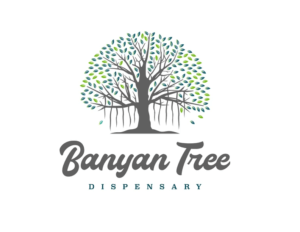
As a local native, I understand the cannabis culture in my town. The legacy market has thrived for so long in Fresno. One of our biggest challenges will be convincing medicinal users and cannabis connoisseurs to buy their cannabis from a licensed facility and not from the streets. In order to create the best experience possible, it starts with a well-trained, knowledgeable staff. I am lucky to have two educators on my team who have helped me put together a robust employee development program that will ensure that the Banyan Tree staff will be primed for success.
My goal for Banyan Tree is to be the #1 dispensary to work for. I truly believe that the success of your business relies heavily on its employees. I want our employees to have purpose and feel proud of the work they do. Banyan Tree was built upon the idea of helping our surrounding community achieve wellness and enjoyment through cannabis. When you come to Banyan Tree, you will not be rushed, you will feel safe, your questions will be answered, and the price you pay will not shock you.
What is your goal for the greater good of cannabis?
I am hopeful that I will see full legalization in my lifetime. As a cannabis business operator, I would like cannabis to be recognized as a normal commodity and not this taboo substance that has so much negativity around it and red tape. As a business owner, I would like cannabis commerce to transact and be accepted without any special rules in regards to banking and filing federal income tax. As outdated stereotypes are finally fading away, more and more consumers view cannabis as an integral part of their health and wellness routine. I’m confident that in 20 years we will look back at the history of cannabis and just laugh at all the nonsensical rules surrounding cannabis in the early 2000s.
What kind of challenges do you face in the industry and what solutions would you like to see?

Most cannabis operations are running all-cash businesses because mainstream, national banking institutions are not willing to support a federally illegal industry. A small number of state-chartered banks and credit unions have offered financial services to compliant operations, but establishing these relationships continues to be a significant challenge for operators.
An equally frustrating financial challenge is IRS Tax Code 280E, which states that “no deduction or credit shall be allowed in running a business that consists of trafficking a controlled substance.” This archaic code impacts cannabis businesses across the nation, causing unnecessary fiscal and operational stress.
Why did you join NCIA? What’s the best or most important part about being a member through the Social Equity Scholarship Program?
I joined NCIA through the Social Equity Scholarship program to extend my network of cannapreneurs and to help develop best practices and guidelines that will shape the future of our industry. I would say for me, the best part of being a member of NCIA is the synergy. One of my favorite parts of the program is the “Power Hour.” Each week, Mike Lomuto hosts a zoom meeting dedicated to Social Equity members. It is where we have an opportunity to share ideas and find solutions to the issues we all face in our industry. I am very capable, but I recognize that by fostering relationships and collaborating with others in my industry, I can achieve far more than I could ever achieve on my own.
Committee Blog: Employee Recruiting and Retention are Expensive… Training is Not

 by NCIA’s Education Committee
by NCIA’s Education Committee
Profit margins are tight for every business in the cannabis industry. From plant through product development to retail sales at a dispensary, keeping a keen eye on costs and managing those costs can be the difference between profit and loss in any given month. The concept of investment – in employees, in technology, in building a culture for success – can also be elusive in an environment when private equity wants their multiple and the taxman is always around the corner. However, successful companies invest in their people and successful teams drive revenue growth. This is as true in the cannabis industry as it is in every industry.
Employee expenses, including salary, are significant for every company in the cannabis industry. A line-level employee costs about $4,100 to hire and onboard according to the Society of Human Resource Management. Senior-level leadership is exponentially more expensive. According to the 2022 Cannabis Industry Salary Guide, “the costs of acquiring and keeping quality team members keep rising fueled by competition for available talent and nationwide salary inflation. Cannabis salaries rose 4% on average in 2021 with compensation for senior executives rising as much as 10%.” Salary is just one component of a successful employee/employer relationship. Hard costs such as benefits as well as soft costs such as culture, training, and long-term development need to be factored into the decision to hire an employee.
The savvy business owner realizes that hiring is just the first step in developing a successful employment program, and just the beginning of the investments required. Training and developing your employees has significant benefits for your corporation. Business owners will reduce turnover, increase sales, and improve morale – all key components of driving profit – through investing in their employees. Let’s outline a few key benefits of training employees with a specific focus on cost and lost revenue:
- Every new hire from entry-level to your most senior strategist takes time and distracts your team from completing their most important roles. From interviews through onboarding, employee churn cuts productivity and distracts your entire team from their best and highest use.
- Unhappy employees make mistakes, are careless, and create risk, which can lead to legal action (for example, employment and harassment, product or financial theft, trade secrets, and investigations by the DOJ, SEC, and IRS are just a few of the types of litigation a company can possibly expect). Lawyers are expensive, and lawsuits take the attention of leadership away from their focus on generating revenue. Well-trained teams implement processes designed to avoid risk and therefore minimize litigation.
- Satisfied employees seek investment from their employer. Investment can be monitory, but it also is training and professional development. When you demonstrate an interest in your team members, they will be happier and your business will grow as they repay that investment through their tangible and intangible efforts.
- People want to belong. We are pack animals by nature, and investing in training demonstrates to employees that you want them to grow and stick around – be part of your pack.
- Unsatisfied employees may steal or take your trade secrets to your competitors. Employee mobility is a drain on the brain power of your teams, and opens your company’s risk profile in ways you have not imagined.
Paying competitive salaries may seem like enough to keep a happily employed workforce with your company, but it’s not enough today. Easy employee mobility and the expectations younger generations have of their employer require a more nuanced approach. The risks of not investing in your employees’ future are analogous to buying a car and never changing the oil. Complete engine failure is exponentially more expensive than adhering to the maintenance schedule. Your employee relations are similar. Providing training, development, and growth opportunities may have a short-term cost, but the long-term benefit is that your cannabis company will produce revenue for many years to come.
As the cannabis industry matures, more and more training resources become available to enrich your staff, invest in their professional development, and educate them so they are able to perform at their highest level onsite. As an NCIA member, your company has access to a plethora of blog posts, webinars, podcasts, and in-person events which can be shared with employees. Utilizing these readily available resources will bolster company culture and impress upon workers their value and importance to your business.
NCIA’s Education Committee assists with the design and development of educational programming for NCIA, and helps identify emerging topics in the cannabis space. Learn more about our members here.
Committee Blog: Cannabis and Cancer – Cannabinoids as Cancer Cell Disablers (Part 2)

 by Ann Allworth, Ph.D. and Cynthia Shelby-Lane, M.D.
by Ann Allworth, Ph.D. and Cynthia Shelby-Lane, M.D.
Members of NCIA’s Scientific Advisory Committee
There is abundant anecdotal evidence showing that people can live with cancer for decades after diagnosis. Several books and films describe various alternative approaches to traditional medicines that patients have used to help them heal, many citing the use of cannabis. For example “Weed the People” is an excellent film documenting the cannabis experiences of children with cancer and advocating for the sorely needed research on the healing potential of this powerful plant.
This blog will explain how cannabis can help our cells and the endocannabinoid system (ECS) components work together to weaken the ability of cancerous cells to survive. Let’s begin with a quick overview of cells and how they work. Cells are the smallest living unit in the body. There are about 200 different types of cells that come in different shapes and sizes, depending on their job. All cells are enclosed by a cell membrane which holds the cell’s contents and houses receptors, structures that allow cells to communicate with each other via ligands. Ligands carry specific messages and include, but are not limited to, neurotransmitters, hormones, growth factors, endocannabinoids, and phytocannabinoids. They circulate throughout the body in our bodily fluids and bind to specific receptors. Receptors have a binding site with a distinct shape that matches the shape of specific ligands. In other words, each ligand is like a key that fits a lock to “open” the receptor so that the message the ligand carries can be received and transmitted to the cell.
Receptors and ligands are two of the main components of the ECS. Even though it is called a system itself, the receptors and ligands of the ECS are found in other systems of the human body, such as the neurological, gastrointestinal, and immune systems. This means most cells in the body contain cannabinoid receptors, known as the first cannabinoid receptor, CB1, and the second cannabinoid receptor, CB2. These receptors are activated by cannabinoids our body makes itself, known as endocannabinoids [anandamide (AEA) and 2-arachidonoylglycerol (2-AG)], cannabinoids made by plants, known as phytocannabinoids, and some enzymes [e.g., fatty acid amide hydrolase (FAAH) and monoacylglycerol lipase (MAGL)].
This is an excellent basic understanding, but the ECS is much more complex. It is incredibly important to human health as its function is to maintain balance throughout the body and it helps to regulate many facets of physiological, behavioral, immunological, and metabolic functions in humans. The vast medicinal value of cannabis comes from the mixture of cannabinoids, terpenoids, and flavonoids that interact in some way with the ECS. Although research is still being performed to better explain how the ECS is involved with cancer, it has been demonstrated in animal and cell experiments that cannabis stops a number of vital functions in cancer cells, including proliferation, angiogenesis, and metastasis, and also causes apoptosis of malignant cancerous cells.
Proliferation is the scientific term for how quickly a cell can divide into two cells. Cancer cells can quickly proliferate because the molecules that regulate how often a cell can divide and create new cells have been disabled. This process allows cancer cells to grow in an uncontrolled fashion and to compete with healthy cells for space and nutrients. Animal and cell studies have shown that the compounds in cannabis can stop cancer cell proliferation in a wide variety of cancer types including breast, lung, prostate, liver, pancreatic, and many others.
Angiogenesis means the formation of new blood vessels. As cancer cells multiply and form large clumps, they secrete chemicals, many of which are ligands, that bind to receptors on cells in the tumor microenvironment. These cells receive the messages and begin building blood vessels. The newly formed blood vessels guarantee the growing clump of cancer cells will be fed all the nutrients and oxygen it needs to survive and flourish. A growing number of studies demonstrate that cannabis can inhibit angiogenesis in experimental cancer models.
Metastasis occurs when cancer cells spread to another part of the body other than where the cancer began. Cancer cells physically extend into the normal cells in their microenvironment, or they can pass through the walls of nearby blood or lymph vessels to get to distant locations. When they stop moving, they secrete messages that direct angiogenesis. Metastasis is a feature of more advanced cancer stages, such as stage 4 cancer. Experimental data shows that cannabis can hinder metastasis.
Apoptosis is a form of programmed cell death. Apoptosis is a process that cells perform if specific genes are turned on. The cell then goes through a series of steps that end in its death. Cannabis has been shown to induce apoptosis, which is an excellent fate for a cancer cell. Although the experimental data here is predominantly from animal and cell cancer models, it is likely that these critical cellular processes are happening when cancer patients improve using cannabis.
Hopefully soon, more research will help scientists elucidate the exact mechanisms by which patients experience relief using cannabis!
 Ann Allworth Ph.D. is founder and CEO of Cannabis Education Solutions. In her first year of undergrad, Ann Allworth Ph.D. developed a great interest in embryology while taking Anatomy & Physiology. After graduating, she enrolled in a Ph.D. program in cell biology and studied mammalian eggs and embryos. For several years after completing the program, she continued this research at Tufts University Health Sciences Center while working as a Gross Anatomy instructor. Next, Ann worked as an assistant professor at Howard University College of Medicine, continued teaching Gross Anatomy and began studying breast and ovarian cancer cells.
Ann Allworth Ph.D. is founder and CEO of Cannabis Education Solutions. In her first year of undergrad, Ann Allworth Ph.D. developed a great interest in embryology while taking Anatomy & Physiology. After graduating, she enrolled in a Ph.D. program in cell biology and studied mammalian eggs and embryos. For several years after completing the program, she continued this research at Tufts University Health Sciences Center while working as a Gross Anatomy instructor. Next, Ann worked as an assistant professor at Howard University College of Medicine, continued teaching Gross Anatomy and began studying breast and ovarian cancer cells.
After 19 years in medical academia, Ann did a 180 and moved on to the natural product industry, where she learned there were many alternatives to pharmaceuticals to achieving health. And among other topics, taught the immense value phytonutrient rich foods and herbs have to optimal health and well-being for almost 15 years. Upon learning of the existence of the endocannabinoid system (ECS) in March 2019 she was shocked she had never heard of it, but she is far from alone. The general public is for the most part clueless about the ECS and the medical establishment by and large ignores its existence. So, she decided to create a company dedicated to illuminating minds to the expansive nature of the ECS and its unparalleled importance to human health.
 Cynthia Shelby-Lane, MD, is an emergency physician, board-certified in anti-aging and functional medicine, and a certified Marijuana Doctor practicing medicine in Detroit, Michigan. Dr. Shelby-Lane has certified more than 10,000 medical cannabis patients in the State of Michigan. She coaches patients on their use of cannabis in conjunction with their current medications and medical conditions. She has been a member of NCIA and the Scientific Advisory Committee for the past five years, in addition to membership in multiple cannabis associations and organizations. She speaks at conferences/webinars and in the community on the use and benefits of cannabis and the evolving landscape of cannabis research. Dr. Shelby-lane has worked closely with the Last Prisoner Project.
Cynthia Shelby-Lane, MD, is an emergency physician, board-certified in anti-aging and functional medicine, and a certified Marijuana Doctor practicing medicine in Detroit, Michigan. Dr. Shelby-Lane has certified more than 10,000 medical cannabis patients in the State of Michigan. She coaches patients on their use of cannabis in conjunction with their current medications and medical conditions. She has been a member of NCIA and the Scientific Advisory Committee for the past five years, in addition to membership in multiple cannabis associations and organizations. She speaks at conferences/webinars and in the community on the use and benefits of cannabis and the evolving landscape of cannabis research. Dr. Shelby-lane has worked closely with the Last Prisoner Project.
Member Blog: As a Leader, You’re in the Business of Talent. That Means Your Top Priority Should Be Your People.

By Charlena Berry, Cannabis Business Growth
The following is adapted from Breaking the Stigma.
As a leader (especially a leader in the cannabis industry), you’re in the business of talent — identifying it, hiring it, developing it, and retaining it. Your top priority should thus be your people.
The first place to look to see if you have a people problem in your company is employee turnover. You can’t (and shouldn’t want to) completely avoid turnover, as it’s natural for some employees to move on and, occasionally, you will make hiring mistakes and need to let people go.
However, if you have high employee turnover — say, as high as 20 to 30 percent over the course of a year — it’s a sign you have an illness in your company. While this figure may seem low, traditional retailers aim for an even lower turnover rate. To calculate turnover, divide the number of employees that left the company by the total number of employees. For instance, if 30 employees out of 100 employees leave in the course of a year, your turnover is 30 percent.
If your employees don’t want to work at your store, do you think they’re going to create the kind of environment that customers want to shop in? Probably not. And if a good portion of your employees are in training and don’t yet know what they’re doing, is that going to create a delightful customer experience? Again, probably not.
The good news is that there are steps you can take — which I’ll share with you here — to reduce turnover and prioritize your people. Ultimately, by implementing some or all of these strategies, you’ll be able to offer your people the greatest possible experience. That will benefit not just them, but your organization and your customers as well.
Adopt the Leadership Mindset
Many factors can contribute to turnover. If you’re not offering compensation and perks that are on par with other cannabis retailers in your area, for instance, you’re likely to lose employees.
The biggest factor, though, is leadership. You might have heard the saying before that people don’t leave companies, they leave managers. If your management team makes employees miserable or doesn’t make them feel valued, they’ll leave.
If, on the other hand, you adopt the leadership mindset and take the time to train managers to form a personal connection, be curious, empower, develop, and inspire your employees, they’re more likely to stay because those elements create a rewarding, enjoyable work environment.
Promote From Within
It’s also critical that you establish a practice of promoting from within. If your employees don’t see any growth opportunities within your company, they will be forced to leave to progress in their careers.
Promoting from within also just makes good business sense. Who knows your store and your company culture better than the people who already work there? When you promote an employee to a leadership position, they can hit the ground running.
Especially as you scale, promoting from within is key to implementing a seamless customer experience across multiple locations. When a role is empty, it disrupts the continuity of operations. Imagine a ship whose captain is swept overboard. You need a second-in-command ready to step up and fill the role.
Focus on Diversity, Inclusion, and Equity
As you hire and build paths to leadership positions for your employees, keep diversity, inclusion, and equity in mind. With the long history of people of color being disproportionately impacted by the war on drugs, the very least we can do as retailers is ensure we are being fair and creating opportunities in our hiring and promoting practices.
Plus, diversity leads to better business results! McKinsey & Company found that companies in the top quartile for ethnic and cultural diversity in executive teams outperformed those in the bottom quartile by 36 percent.
Understand When to Let People Go
As unpleasant as it can be, the final aspect of managing the talent of your company is understanding when to let people go. Every employee is a representation of your company and contributes to the customer experience. You can’t afford to have subpar employees when you could put someone incredible in that role — someone who will make a difference in terms of how customers think and feel about you.
If a team member isn’t living up to the expectations of a role, you need to provide clear, regular feedback about what needs to change. Employ your curiosity and ask leading questions to try to mold them into the role: Why do you do things that way? Have you thought about other ways to do it? What if you tried x or y?
If after several months, they’re still failing to meet expectations, they’re probably not a good fit for the role. At that point, you can either try to find a different role for them if you think they could still make a valuable contribution or let them go. You can’t expect people to magically know everything they need to know and perform well in a role without guidance and training, but you also can’t expect everyone to be a good fit.
Turnover is Expensive
Bottom line, turnover is expensive, both financially and culturally. Every time an employee leaves, you have to pay the costs of onboarding and training a new employee. According to Gallup, that cost can range from one-half to two times the employee’s annual salary.
It’s far cheaper — and results in a better customer experience — to retain and develop your current employees. Turnover also damages your company culture. When you have many empty positions or many new employees in training, it increases the pressure and stress on your veteran employees. It can trigger a wildfire of employees leaving, which lowers morale and disrupts team dynamics.
As a leader, it’s easy to get caught up in the minutiae — emails to answer, decisions to make, spreadsheets to review. Those tasks are important, but the area where you can have the most impact is in people’s development. When you put people first, it’s like dropping a rock into a still pond, spreading ripples throughout the company.
 For more advice on actionable strategies you can implement that put your people first, you can find Breaking the Stigma on Amazon.
For more advice on actionable strategies you can implement that put your people first, you can find Breaking the Stigma on Amazon.
Charlena Berry is the author of Breaking the Stigma: Racism, Lies, the Opioid Endemic, and Inviting Grandma to the Dispensary. In this book, she exposes lies that created the stigmas associated with cannabis, and how these stigmas must be addressed to see continued growth in the marketplace. She then outlines a framework that provides key strategies for retailers to implement to improve the customer experience and increase profitability.
Writing from her experiences in the industry, Charlena is a global cannabis business executive and the founder of Cannabis Business Growth, a premier cannabis business consulting firm. Prior to that, she spent more than a decade in Supply Chain and Retail Operations for Fortune 500 companies like Whirlpool and Office Depot/Office Max. She also serves as the Chief Operating Officer for The Cake House, a chain of dispensaries in Southern California.
Member Blog: The 6 Technology Tools Every Multi-Location Dispensary Needs

by Tommy Truong, CEO at KayaPush
As a multi-location dispensary owner, you know that the industry is expanding quickly. With more people choosing to buy and enjoy cannabis and there’s no sign of this trend slowing down. And as the demand increases, so does the opportunity to scale single-store dispensaries, into multi-location establishments.
Dispensaries like Tokyo Smoke and Cookies now have multiple locations in different countries and states, and lesser-known Mom and Pop cannabis retail stores are here for the expansion and boom as well, but if you own or operate a multi-location dispensary, you will need specialized tools to stay compliant, lean and effective.
What is a multi-location dispensary?
A multi-location dispensary is a marijuana dispensary with at least two locations. In other words, it’s a chain of dispensaries.
Multiple dispensaries serve more people by increasing convenience and accessibility. These dispensaries have branches in other cities, states or countries, or even different locations in the same city.
The benefits of having multiple locations over traditional single-location dispensaries are numerous. You can:
- Offer your services to more people
- Increase your brand awareness by being present in more places
- Streamline processes like billing and payroll across multiple locations
- Reduce overhead costs by not having to maintain as much human capital in each place
What are dispensary technology tools?
Dispensary technology tools, or dispensary software, are the software and hardware that help dispensaries manage their business.
This could include inventory management, an e-commerce website, POS systems, and finally, people management tools like dispensary payroll, HR, scheduling, and time tracking to manage their employees and staff.
Why do you need unique tools when running a multi-location dispensary?
When you’re running a multi-location dispensary, it’s more important than ever to stay organized. You need tools that can help you manage people and systems, inventory, and finances in a cohesive way.
It’s also helpful to benchmark things across your locations and gain insights into each market’s uniqueness.
For example, let’s say you have two locations – one in California and one in Colorado. You can use your analytics tool to see which products are more prevalent in each state or even which days of the week are busier for each location.
You could also compare how much inventory you have at each location and see if there are any patterns between them. Maybe one place sells out of product more quickly than another? The information will help you make better business decisions about where to open new dispensaries or how to improve existing ones.
Here are the top 6 tools we recommend for any multi-dispensary operator.
1 – A POS system that works across multiple dispensary locations.
A POS system that works across numerous dispensary locations allows you to manage your business from a centralized location rather than log into each place individually. With the system, you can track inventory across your sites and make sure everything stays in sync.
And while most POS systems have some level of integration with other applications, here are three key integrations to look for:
- Track and trace: The ability to track a product from origin through distribution, so you know exactly where it is at any given time.
- Dispensary workforce management: The ability to view employee hours and schedules across multiple locations. The feature will ensure that everyone is working as efficiently as possible.
- Dispensary payroll software: A payroll application that integrates with your existing POS system so that employees can clock in from anywhere with just a few clicks!
What is a dispensary POS system?
Dispensary POS systems are the backbone of any multi-location dispensary. They help you track inventory, manage employee hours and shifts, and keep track of customer purchases.
They’re also the first step in creating a successful business by enabling you to do things like:
- Track product inventory across multiple locations
- Manage employee pay, hours, and shifts
- Keep track of customer purchases in real-time (to see what products people buy)
Many dispensaries use POS systems to track medical and recreational marijuana products and their sales metrics. A good dispensary POS system will keep track of inventory levels across all your locations. It will also monitor customer traffic at each location.
What to look for in a POS for multi-dispensary locations.
When you run a multi-location dispensary, it’s crucial to have a POS that can handle the unique needs of your business. Here are some of the most important things to keep in mind when shopping for a POS.
Easy to learn
When running a multi-dispensary location, you need software that’s easy to learn. It should be intuitive, with clearly labeled buttons and a simple interface. There are many options out there that meet this requirement. Some even come with a training program or video tutorials.
Compatible with the current system
You will want to make sure the new POS software is compatible with your current system. It saves you the additional work of switching over. The POS software should integrate with your existing POS hardware and provide real-time data transfer between devices.
Integrates with a payment processor
A good POS will be able to integrate seamlessly with your payment processor. It should have features that process transactions quickly and easily without any hassle from either the seller or buyer.
Customer support
When you have multiple locations, it’s vital that your customers can quickly call or email customer support if they have an issue—and that the support team is responsive and helpful.
Support for multiple currencies
If you’re operating in multiple countries, you’ll want to find a merchant solution that supports multiple currencies so you can accept payments from overseas customers with ease.
2 – Consistent payment systems.
Consistent payment systems are one of the most important things to have in place for a multi-location dispensary. The first thing you need to do is decide the types of payments you will accept.
The payment system can be as simple as cash or debit card, or it could include ACH transfers and cryptocurrencies. The key is to choose available options in all of your locations, so customers can pay no matter where they are.
It also helps to ensure that all locations have the same system for accepting payments. If one accepts cash-only, but another accepts debit cards and credit cards, this can create confusion and frustration for customers who travel between locations.
Finally, it’s essential to ensure that each location has access to its accounts to process its sales and deposits without having to go through a central office or owner each time there’s an issue.
Here are some examples of options for consistent payment systems:
- Cash: some dispensaries only accept cash as a payment method. If you only accept cash at one of your dispensaries, then make sure there is an ATM nearby because it may not be convenient for customers to drive elsewhere to use an ATM.
- Debit/Credit Card: Debit and credit card transactions are fast and easy for customers because they don’t have to wait for their bank account balance to transfer into their checking account before purchasing.
- Cryptocurrencies: Cryptocurrencies such as Bitcoin (BTC) and Ethereum (ETH) are often used by dispensaries because they offer high levels of privacy, security, and anonymity for users worldwide. Because these ‘coins’ don’t require any middlemen to oversee their transactions, they are ideal for businesses that want their payments kept secret from third parties.
- ACH transfer: This electronic system allows you to transfer funds from one account to another without physically moving money or checks through the mail. It’s usually an automated process, so you don’t need any specialized training or experience with the system to use it effectively.
- Point of banking: A Point of Banking system allows you to accept credit cards through a single point of sale (POS) terminal located at each location. This means that your customers can pay with their credit card wherever they go — no matter which place they visit.
3 – HR software for multi-location dispensaries.
Dispensary HR software is vital for hiring, onboarding, and retaining great people.
It is essential for multi-location dispensaries as they often hire across multiple locations. It’s necessary to have an HR for multi-location dispensaries that helps you manage your hires to make sense and keep everyone on the same page.
To keep track of employees, you might want to find out who has worked at which locations during a particular period. This information will help you keep track of your company’s workforce and ensure that former employees are not applying for jobs at new locations.
Another benefit of this type of software is that it will help you share information more efficiently among managers by storing essential documents like applications or resumes in one place.
Finally, with dispensary HR tools, you can utilize systems like applicant tracking tools to hire for one dispensary, and not the other. You can also set up alerts when someone applies for your dispensary who has previously worked at a different location, and was let go.
4 – Workforce management to save time and money.
Workforce management software can save you a lot of time and money by allowing you to manage your staff at each location better. It allows you to track your employees’ performance, schedule shifts and vacations, view employee information, send messages, and more.
Here are other reasons you need a workforce management software for your multi-location dispensaries:
- Dispensary scheduling software will integrate with your point-of-sale system to forecast your schedules via machine learning. It helps you better plan for staffing needs in the future.
- Scheduling software can integrate with facial recognition time tracking technology, providing alerts to business owners when employees clock in outside of assigned work hours.
- Scheduling for multi-location dispensaries with a lot of employees is complex. However, scheduling software can easily sort out staff on multi-location shifts, so that they show up at the right place at the right time.
- Easy toggling between locations to manage staff: if you use integrated multi-location dispensary technology, it’s easy to manage many locations, and time clocks, from the same laptop by toggling between locations. Providing you with a birds eye view and helping you automate your operations.
5 – Inventory management that is consistent yet flexible.
Inventory management is a crucial component of the success of any multi-location dispensary. It’s vital to track what’s happening at each dispensary location.
However, you should be able to review items that sell better at specific locations and see how they’re performing overall. This way, you can ensure you’re not stocking too many (or too few) of each item. With this feature, your customers will have the best possible experience no matter where they go.
Inventory tracking software is one of the essential tools that any dispensary needs. It’s a great way to ensure that all locations use the same naming conventions for their products. It helps you offer your customers the best possible experience no matter where they go.
For example, suppose you have an edible called “Banana Bread” in one place and “Cinnamon Roll” at another location. It may be difficult for employees or customers to know what they’re getting when they order the product by name alone.
The best inventory management systems take into account the needs of your business and your customers. They can be used on a small scale or scaled up to manage massive amounts of products across multiple dispensaries.
6- Payroll software for multi-location dispensaries.
Managing payroll for multi-location dispensaries is a tough nut to crack. You need to keep track of all the employees at each location, their hours worked and paid, benefits and compensation, and their taxes.
The good news is that there is specific payroll software built for cannabis dispensaries that can help you manage all those details without too much trouble.
One recommendation would be to choose a payroll provider with service in all the geographic locations you have your dispensaries. This way, you can pay staff across the board instead of manually. The automation will help ensure your payroll tax and overtime calculations are accurate.
Many companies are turning to dispensary payroll software that integrates with HR, time tracking, and scheduling software, to help streamline processes and save time.
What do the experts say?
The most important thing to consider when choosing a dispensary solution is how you want to run your business. However, many multi-location dispensary experts advise keeping it simple. A simple system lets you track sales and inventory. As time goes on, you can add more features.
The best way to simplify your dispensary operations is to use a dispensary POS system that integrates with your dispensary payroll, HR, and workforce management for streamlined operations.
In addition, choose a technology that works for everyone in your organization. Make sure everyone is comfortable with whatever product or service you choose before moving forward with implementation plans.
For more tips on choosing a tech solution for your multi-location, check out the key things that the owners of 100 dispensaries recommend.
 Author Tommy Truong is the CEO at KayaPush; the cannabis software helping dispensary owners manage their employee HR, scheduling, and payroll. KayaPush also integrates with leading dispensary POS systems. Tommy loves hot sauce, fried chicken, and running with his Boston terriers.
Author Tommy Truong is the CEO at KayaPush; the cannabis software helping dispensary owners manage their employee HR, scheduling, and payroll. KayaPush also integrates with leading dispensary POS systems. Tommy loves hot sauce, fried chicken, and running with his Boston terriers.
Optimize your operations with KayaPush. We hope this article has helped you learn about different dispensary software tools and tech for managing multiple locations and the different ways you can overcome the challenges with multi-location dispensary management systems. If you are looking for a compliant and integrated solution to manage your multi-location dispensary chain, check out KayaPush.
KayaPush delivers a more innovative, unified compliance solution that meets payroll and HR needs without compromising speed and accuracy. Implementing KayaPush will save you time and money and help eliminate the financial risks associated with non-compliance.
Member Blog: Reflections On Banking Reform For Cannabis Operators
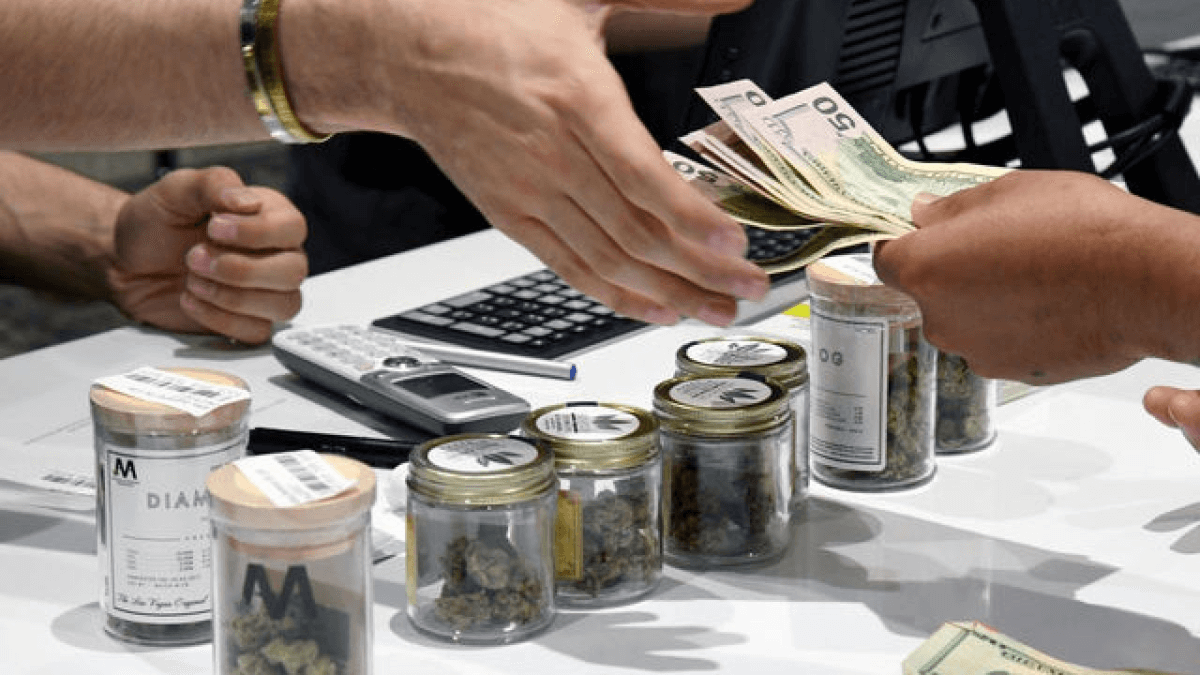
by Joshua Gilstrap, e2b teknologies
Isn’t it crazy to think that the legal cannabis industry could be worth $57 billion by 2030? Or that nearly half of the country’s adult population (49%) has tried marijuana, the largest number ever recorded.*
At the time of this article, nineteen states, two territories, and Washington D.C. have legalized cannabis for adult recreational use. With more than two-thirds of U.S. states that have legalized the sale of both adult-use and medical cannabis and nearly half the population of potential cannabis consumers – it’s safe to say the cannabis industry is thriving.
But can it continue to grow without banking reform?
Cannabis businesses have a hard time accessing traditional banking options because the plant is still federally illegal. This means that banks are hesitant to work with cannabis companies for fear of retribution from the federal government.
This lack of banking options creates a difficult environment for cannabis businesses to operate in. Since they can’t deposit money or write checks, they have to operate on a cash-only basis, which can lead to security problems.
Cannabis operators also have a hard time securing financing because most traditional lenders are unwilling to work with them. This leaves them struggling to get the capital they need to grow and scale their business.
When cannabis businesses lack financing options for basic business growth, a banking system more ideal for cannabis operators is needed.
The Federal Law Guides Everything
Despite the growing opportunities in the cannabis industry at the state level, many prospecting business owners are stalled by a lack of capital. Businesses in the cannabis industry might celebrate legalization in their respective states but still deal with the challenge of accessing banking services.
Cannabis dispensaries that run cash-only operations are forced to confront security challenges in a new way. Online ordering, credit and debit card processing, taking business loans, and accessing other revenue-driving financial services are denied to cannabis businesses due to their federal status.
This shows an immediate need for financial reprieve in the cannabis industry.
Getting Financial Reprieve
The House of Representatives has passed several bills supporting the cannabis industry. Some of these bills include:
- Bill to decriminalize marijuana
- The Marijuana Opportunity Reinvestment and Expungement (MORE) Act
- Legalization of adult-use cannabis
- Legislation for medical marijuana programs
- Legislation to reduce barriers to cannabis research
- Approval of measures for adult cannabis use
One such bill that focuses on banking reform is the Secure and Fair Enforcement (SAFE) Banking Act, which aims to reduce the banking services challenges in the cannabis industry. If the SAFE Banking bill passes in Congress, financial institutions can open their services to cannabis businesses without the fear of violating anti-money laundering (AML) laws.
In return, cannabis businesses reduce the risk of theft and employee welfare by transitioning from cash-only services to banking services. However, this financial reprieve doesn’t address the cannabis tax code that prevents cannabis businesses from deducting business expenses from the gross income as per the Controlled Substances Act
Nonetheless, the SAFE Banking bill is a step in the right direction. The remaining concern is whether these financial reprieves will pass in the Senate and legalize cannabis businesses at the federal level.
Another financial option expected to reform the cannabis industry is crypto. The authenticity and security of blockchain currencies like Bitcoin are becoming a lucrative consideration for financial reprieve in the cannabis industry.
Currently, there are cryptocurrencies like PotCoin and CannabisCoin mined to cater to various needs within the cannabis industry. However, the uncertainty in the crypto world makes it challenging for the cannabis industry to settle on using crypto as a financial banking solution.
Granted, some crypto technology like blockchain technology is used to transact sales in the cannabis industry, where buyers make cashless payments, and the dispensaries convert this into crypto. But these transactions are not fully transparent.
Notwithstanding, there is hope for the cannabis industry as the number of banks willing to work with cannabis businesses increases. This could result from the increasing support of cannabis banking reform at the state and Congress levels.
But Is The Banking Industry Prepared For This Reprieve?
Financial institutions are gathering more courage when working with the cannabis industry. In 2021, 755 banks showed working relationships with cannabis clients. However, this comfort is more prevalent at the state level than at the federal level, where cannabis is yet to be legalized.
But since support from the federal government is anticipated, banking institutions must equally prepare for the capability to host cannabis businesses legally. Banks must stay compliant with the anti-money laundering (AML) laws.
Banks should conduct due diligence on cannabis businesses that want to use their services. Since federal legalization of cannabis is still pending, some cannabis operations might be illegal. Therefore, it is prudent for banks to start preparation by ensuring any new partners are not lawbreakers.
This means checking for legalization and registration licenses and conducting due diligence on employees and angel investors. Business transactions are also an excellent indicator of whether a cannabis business is involved in illegal activities.
For instance, a cannabis business in a state that frowns upon international shipments shouldn’t have any international transactions. Avid AML monitoring controls should quickly identify legitimate cannabis businesses.
In a nutshell, every business that partners with a cannabis business should be prepared to support its decisions with factual claims. In case of any suspicious activity, the bank should be ready to give an account of their due diligence procedure and the findings.
Creating relationships with federal regulations is also prudent since they help make the regulation process easier. Regulators also help ensure that banks remain compliant with the Federal cannabis laws, which protect their banking operations.
Cannabis business owners must also prepare for the possibility of using open and traditional banking services for their operations. If, or when, cannabis is Federally legalized, the cannabis industry will streamline its operations throughout the U.S.
This means added investments in research, cultivation, marketing, production, and sales of cannabis and cannabis products, whether medicinal or recreational. And the added boost of a legal banking system would further increase employment and boost the economy.
Cards On The Table
Does the cannabis industry need a banking reform? Absolutely. The challenge, however, is that, despite the willingness of the House of Representatives to support the SAFE Act bill, among other proposed banking reforms for the industry, approval in the Senate is still in question. Cards on the table, bank financing in the cannabis industry will propel businesses into more growth, which, in turn, should pragmatically influence the overall U.S. economy. But this starts with active congressional action.
FAQs
What is the current cannabis banking system?
The current cannabis banking system is not ideal for cannabis businesses because the lack of Federal legalization keeps banks from offering traditional banking services to cannabis businesses for fear of violating anti-money laundering (AML) laws.
What are the challenges of using non-FDIC banking options?
Non-FDIC banking options are not secured by the FDIC, meaning businesses that operate under these banking services are not protected by the Federal laws against theft or failure.
What can a banking reform do for the cannabis industry?
A banking reform allows banking institutions to offer cannabis businesses the same banking services they offer other businesses, like capital loans, online bill payments, and debit and credit cards.
 Joshua Gilstrap is the Marketing Manager for e2b teknologies, in addition to his marketing responsibilities Joshua leads business development for e2b teknologies emerging Canna Suite product line. A business graduate with a focus in marketing from Miami University in Oxford, Ohio, he joined the e2b team in the Fall of 2019. Josh brought with him a wide array of business and practical experience in planning and execution. Since coming aboard he has led multiple project’s including website hosting and theme standardization company wide, marketing automation streamlining the efficiency of the customer journey, and sales automation where he is changing the conversation from promotion to education, from pitching to catching, and from push to pull in order to keep up with the shifting tides of a digital transformation.
Joshua Gilstrap is the Marketing Manager for e2b teknologies, in addition to his marketing responsibilities Joshua leads business development for e2b teknologies emerging Canna Suite product line. A business graduate with a focus in marketing from Miami University in Oxford, Ohio, he joined the e2b team in the Fall of 2019. Josh brought with him a wide array of business and practical experience in planning and execution. Since coming aboard he has led multiple project’s including website hosting and theme standardization company wide, marketing automation streamlining the efficiency of the customer journey, and sales automation where he is changing the conversation from promotion to education, from pitching to catching, and from push to pull in order to keep up with the shifting tides of a digital transformation.

 MobiusPay, Inc. is a U.S.-based global financial services organization that is committed to empowering individuals and businesses. For more than a dozen years, MobiusPay has leveraged state-of-the-art secure billing technology, long-standing relationships with financial institutions and award-winning customer support to provide merchant processing and payment solutions to brick and mortar and digital businesses around the world.
MobiusPay, Inc. is a U.S.-based global financial services organization that is committed to empowering individuals and businesses. For more than a dozen years, MobiusPay has leveraged state-of-the-art secure billing technology, long-standing relationships with financial institutions and award-winning customer support to provide merchant processing and payment solutions to brick and mortar and digital businesses around the world.

 About
About 

 Jon Spratt leads Greensite Insurance, a specialty MGU providing boutique insurance coverage to the rapidly expanding Cannabis industry. Greensite launched in 2021 and is partnering with agents/brokers to help better protect their clients. Jon also runs a business accelerator that develops and launches new programs on behalf of Aon programs.
Jon Spratt leads Greensite Insurance, a specialty MGU providing boutique insurance coverage to the rapidly expanding Cannabis industry. Greensite launched in 2021 and is partnering with agents/brokers to help better protect their clients. Jon also runs a business accelerator that develops and launches new programs on behalf of Aon programs.
 Nolan Shutler, JD, is a director in MGO’s tax group focusing on tax controversy representation and general state and local tax (SALT) consulting. He also has experience in indirect tax, tax planning, corporate tax compliance, and real estate transactions for public, private, and closely held businesses. Nolan has the ability to leverage tax and business management acumen to understand and forge paths to optimal outcomes.
Nolan Shutler, JD, is a director in MGO’s tax group focusing on tax controversy representation and general state and local tax (SALT) consulting. He also has experience in indirect tax, tax planning, corporate tax compliance, and real estate transactions for public, private, and closely held businesses. Nolan has the ability to leverage tax and business management acumen to understand and forge paths to optimal outcomes.

 Author:
Author:  Lee Johnson
Lee Johnson
 Mack Bush
Mack Bush
 Bryan McLaren
Bryan McLaren
 Author Tommy Truong is the CEO at
Author Tommy Truong is the CEO at 

 Gary Cohen is the CEO of
Gary Cohen is the CEO of 
 NCIA’s editorial department continues the Member Spotlight series by highlighting our
NCIA’s editorial department continues the Member Spotlight series by highlighting our  I am a first-generation Latino of Colombian descent, Spanish was my first language and my dad spent most of my youth incarcerated. I grew up in NYC Public Housing projects, and I have first-hand knowledge of the indignity of what it feels like to personally be stopped and frisked nearly 100 times which is what happened to me as a kid and young adult for doing nothing else than being a poor Latino growing up in the hood. I was an Education Opportunity Fund scholar and the first in my family to go to college, where I received a degree in business, and a graduate certificate in law. I earned the designation of Disabled Veteran while serving in Iraq with the United States Marine Corps, and I am also a 9/11 first responder. I retired after a career in public service, and have worked as an entrepreneur for over 10 years, and know what it takes to start a business from scratch, without a rich uncle, generational wealth, or rich financial backers.
I am a first-generation Latino of Colombian descent, Spanish was my first language and my dad spent most of my youth incarcerated. I grew up in NYC Public Housing projects, and I have first-hand knowledge of the indignity of what it feels like to personally be stopped and frisked nearly 100 times which is what happened to me as a kid and young adult for doing nothing else than being a poor Latino growing up in the hood. I was an Education Opportunity Fund scholar and the first in my family to go to college, where I received a degree in business, and a graduate certificate in law. I earned the designation of Disabled Veteran while serving in Iraq with the United States Marine Corps, and I am also a 9/11 first responder. I retired after a career in public service, and have worked as an entrepreneur for over 10 years, and know what it takes to start a business from scratch, without a rich uncle, generational wealth, or rich financial backers.  Latinos are consistently underrepresented in terms of business owners throughout all industries. Now when you focus specifically on cannabis and look at a national level, just 5.7% of all license types are held by the Hispanic community. I have seen challenges in the cannabis industry in two key areas, access to capital and the real estate market. It takes money to make money so if you grew up poor, without generational wealth, no rich uncle, no hedge fund connections or oligarchs to call on, how do you raise funds to have the millions that are needed to launch a dispensary or grow? Next and along the same lines is real estate. A lot of landlords won’t lease to cannabis businesses but unfortunately, our experience has been that again a predatory market exists where cannabis rental rates are 2 to 10 times the normal lease rates for the area. The other option is to buy a commercial parcel which brings us back to issue #1 – access to capital. I am ever the optimist, and I see the Latino community growing in the legal cannabis industry as entrepreneurs, c-suite members, and as leaders in the industry bringing our unique insight and sabor to the industry while creating opportunities for generational wealth for our community. In order to get there, we need to bridge the gap through social equity grants and loans that can help Hispanic cannabis entrepreneurs raise enough capital to start their business, and receiving financial education is also crucial for Hispanic entrepreneurs in multiple phases of the cannabis business planning timeline.
Latinos are consistently underrepresented in terms of business owners throughout all industries. Now when you focus specifically on cannabis and look at a national level, just 5.7% of all license types are held by the Hispanic community. I have seen challenges in the cannabis industry in two key areas, access to capital and the real estate market. It takes money to make money so if you grew up poor, without generational wealth, no rich uncle, no hedge fund connections or oligarchs to call on, how do you raise funds to have the millions that are needed to launch a dispensary or grow? Next and along the same lines is real estate. A lot of landlords won’t lease to cannabis businesses but unfortunately, our experience has been that again a predatory market exists where cannabis rental rates are 2 to 10 times the normal lease rates for the area. The other option is to buy a commercial parcel which brings us back to issue #1 – access to capital. I am ever the optimist, and I see the Latino community growing in the legal cannabis industry as entrepreneurs, c-suite members, and as leaders in the industry bringing our unique insight and sabor to the industry while creating opportunities for generational wealth for our community. In order to get there, we need to bridge the gap through social equity grants and loans that can help Hispanic cannabis entrepreneurs raise enough capital to start their business, and receiving financial education is also crucial for Hispanic entrepreneurs in multiple phases of the cannabis business planning timeline.

 Justine Charneau is the head of cannabis industry sales at
Justine Charneau is the head of cannabis industry sales at
 Walter Moore Cognitive Harmony Technologies CEO & CTO, is an accomplished software architect, financial engineer, and entrepreneur residing in the south suburbs of Illinois. He specializes in architecting elegant, compliant, and scalable solutions to complex regulatory environments in the AdTech, FinTech, Digital Assets, and Cannabis industries. He has a Masters of Science in Financial Engineering and undergraduate degrees in Theoretical Physics and Applied Mathematics.
Walter Moore Cognitive Harmony Technologies CEO & CTO, is an accomplished software architect, financial engineer, and entrepreneur residing in the south suburbs of Illinois. He specializes in architecting elegant, compliant, and scalable solutions to complex regulatory environments in the AdTech, FinTech, Digital Assets, and Cannabis industries. He has a Masters of Science in Financial Engineering and undergraduate degrees in Theoretical Physics and Applied Mathematics.
 MC
MC




 Who asks if you think HLV may be in your garden?
Who asks if you think HLV may be in your garden?
 Nicole Perry has been with
Nicole Perry has been with  Gary Paulin is VP of Sales and Client Services at
Gary Paulin is VP of Sales and Client Services at 
 By Jodi Green, Miller Nash LLP; Shay Gilmore, The Law Office of Shay Aaron Gilmore
By Jodi Green, Miller Nash LLP; Shay Gilmore, The Law Office of Shay Aaron Gilmore
 For more advice on how to undo the Big Lies and share the Big Truths of cannabis, you can find Breaking the Stigma on
For more advice on how to undo the Big Lies and share the Big Truths of cannabis, you can find Breaking the Stigma on 
 Eric Rahn, Managing Director of S2S Insurance Specialists, is a highly specialized insurance broker and risk management professional with over 30 years of experience providing C-Suite executives strategies and solutions that protect and safeguard their businesses.
Eric Rahn, Managing Director of S2S Insurance Specialists, is a highly specialized insurance broker and risk management professional with over 30 years of experience providing C-Suite executives strategies and solutions that protect and safeguard their businesses.

 by NCIA’s Education Committee
by NCIA’s Education Committee
 My name is Adolfo Castillo. People who know me call me Ace. Before I started my first cannabis business, I had a 10-year career in the banking industry. I started in a call center as a customer service associate. I then moved into a traditional banking center where I learned sales and eventually became the assistant manager. It was at the end of my tenure in 2008 that my Tia Eloise was diagnosed with terminal cancer. At the request of my mother, she asked me to get some cannabis in hopes that it would help her sister eat. Although it did not cure cancer, it really helped her appetite and gave her a bit of relief. Unfortunately, my Tia Eloise lost that battle, but it was the relief that I was able to provide that helped bring me peace when she passed away. This all happened around the same time that bill SB 420 was signed into California law, establishing statewide guidelines for Prop. 215. This law paved the way for cooperatives and collectives to begin operating legally in my city. It was at that moment that my love for cannabis became a passion. I felt a need to help more people gain access to cannabis, so I partnered with a friend of mine who sold weed and I took what I had learned about business and applied it to opening my first medical cannabis dispensary.
My name is Adolfo Castillo. People who know me call me Ace. Before I started my first cannabis business, I had a 10-year career in the banking industry. I started in a call center as a customer service associate. I then moved into a traditional banking center where I learned sales and eventually became the assistant manager. It was at the end of my tenure in 2008 that my Tia Eloise was diagnosed with terminal cancer. At the request of my mother, she asked me to get some cannabis in hopes that it would help her sister eat. Although it did not cure cancer, it really helped her appetite and gave her a bit of relief. Unfortunately, my Tia Eloise lost that battle, but it was the relief that I was able to provide that helped bring me peace when she passed away. This all happened around the same time that bill SB 420 was signed into California law, establishing statewide guidelines for Prop. 215. This law paved the way for cooperatives and collectives to begin operating legally in my city. It was at that moment that my love for cannabis became a passion. I felt a need to help more people gain access to cannabis, so I partnered with a friend of mine who sold weed and I took what I had learned about business and applied it to opening my first medical cannabis dispensary.

 by
by 

 Ann Allworth Ph.D. is founder and CEO of Cannabis Education Solutions. In her first year of undergrad, Ann Allworth Ph.D. developed a great interest in embryology while taking Anatomy & Physiology. After graduating, she enrolled in a Ph.D. program in cell biology and studied mammalian eggs and embryos. For several years after completing the program, she continued this research at Tufts University Health Sciences Center while working as a Gross Anatomy instructor. Next, Ann worked as an assistant professor at Howard University College of Medicine, continued teaching Gross Anatomy and began studying breast and ovarian cancer cells.
Ann Allworth Ph.D. is founder and CEO of Cannabis Education Solutions. In her first year of undergrad, Ann Allworth Ph.D. developed a great interest in embryology while taking Anatomy & Physiology. After graduating, she enrolled in a Ph.D. program in cell biology and studied mammalian eggs and embryos. For several years after completing the program, she continued this research at Tufts University Health Sciences Center while working as a Gross Anatomy instructor. Next, Ann worked as an assistant professor at Howard University College of Medicine, continued teaching Gross Anatomy and began studying breast and ovarian cancer cells.  Cynthia Shelby-Lane, MD, is an emergency physician, board-certified in anti-aging and functional medicine, and a certified Marijuana Doctor practicing medicine in Detroit, Michigan. Dr. Shelby-Lane has certified more than 10,000 medical cannabis patients in the State of Michigan. She coaches patients on their use of cannabis in conjunction with their current medications and medical conditions. She has been a member of NCIA and the Scientific Advisory Committee for the past five years, in addition to membership in multiple cannabis associations and organizations. She speaks at conferences/webinars and in the community on the use and benefits of cannabis and the evolving landscape of cannabis research. Dr. Shelby-lane has worked closely with the Last Prisoner Project.
Cynthia Shelby-Lane, MD, is an emergency physician, board-certified in anti-aging and functional medicine, and a certified Marijuana Doctor practicing medicine in Detroit, Michigan. Dr. Shelby-Lane has certified more than 10,000 medical cannabis patients in the State of Michigan. She coaches patients on their use of cannabis in conjunction with their current medications and medical conditions. She has been a member of NCIA and the Scientific Advisory Committee for the past five years, in addition to membership in multiple cannabis associations and organizations. She speaks at conferences/webinars and in the community on the use and benefits of cannabis and the evolving landscape of cannabis research. Dr. Shelby-lane has worked closely with the Last Prisoner Project.

 Joshua Gilstrap is the Marketing Manager for
Joshua Gilstrap is the Marketing Manager for